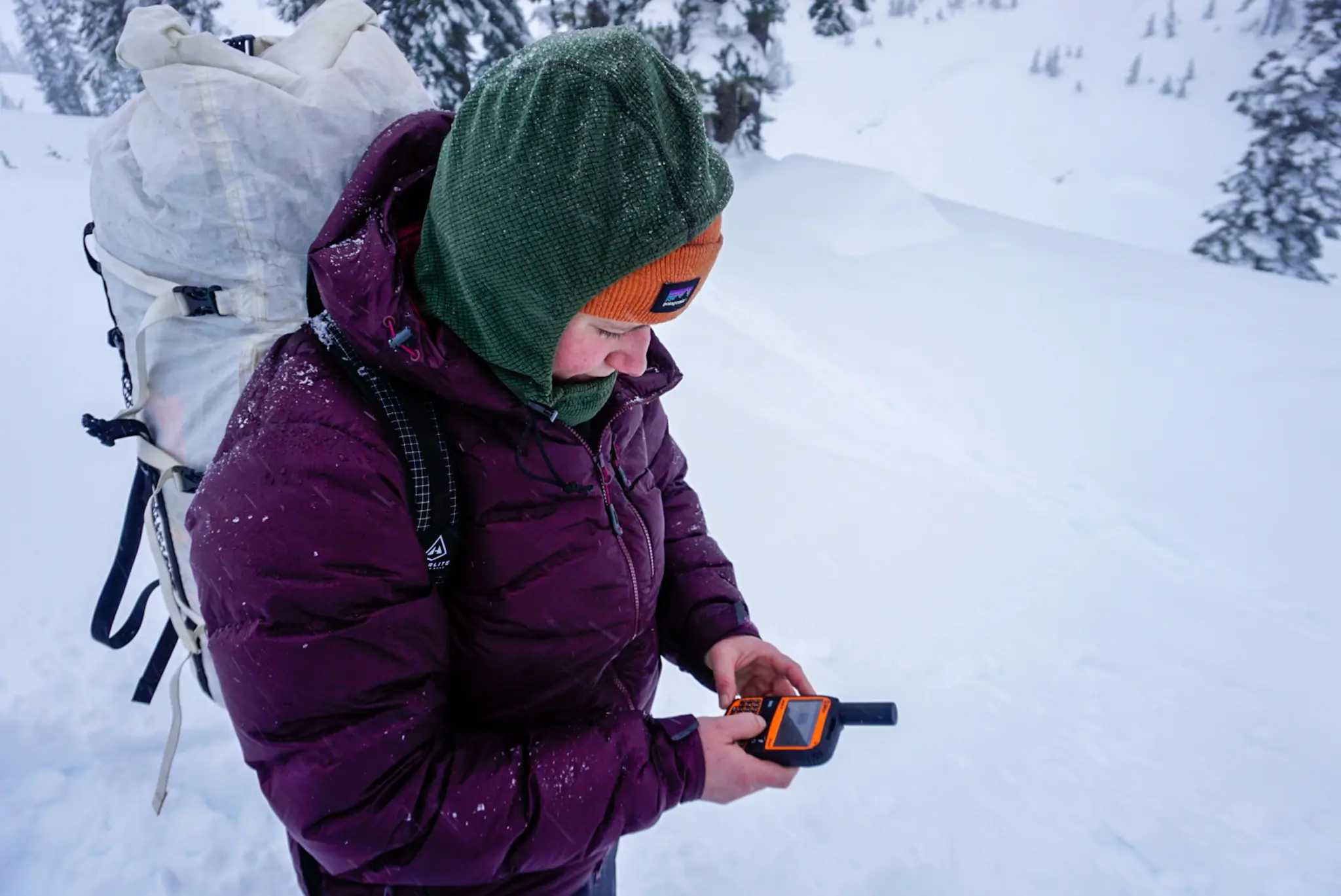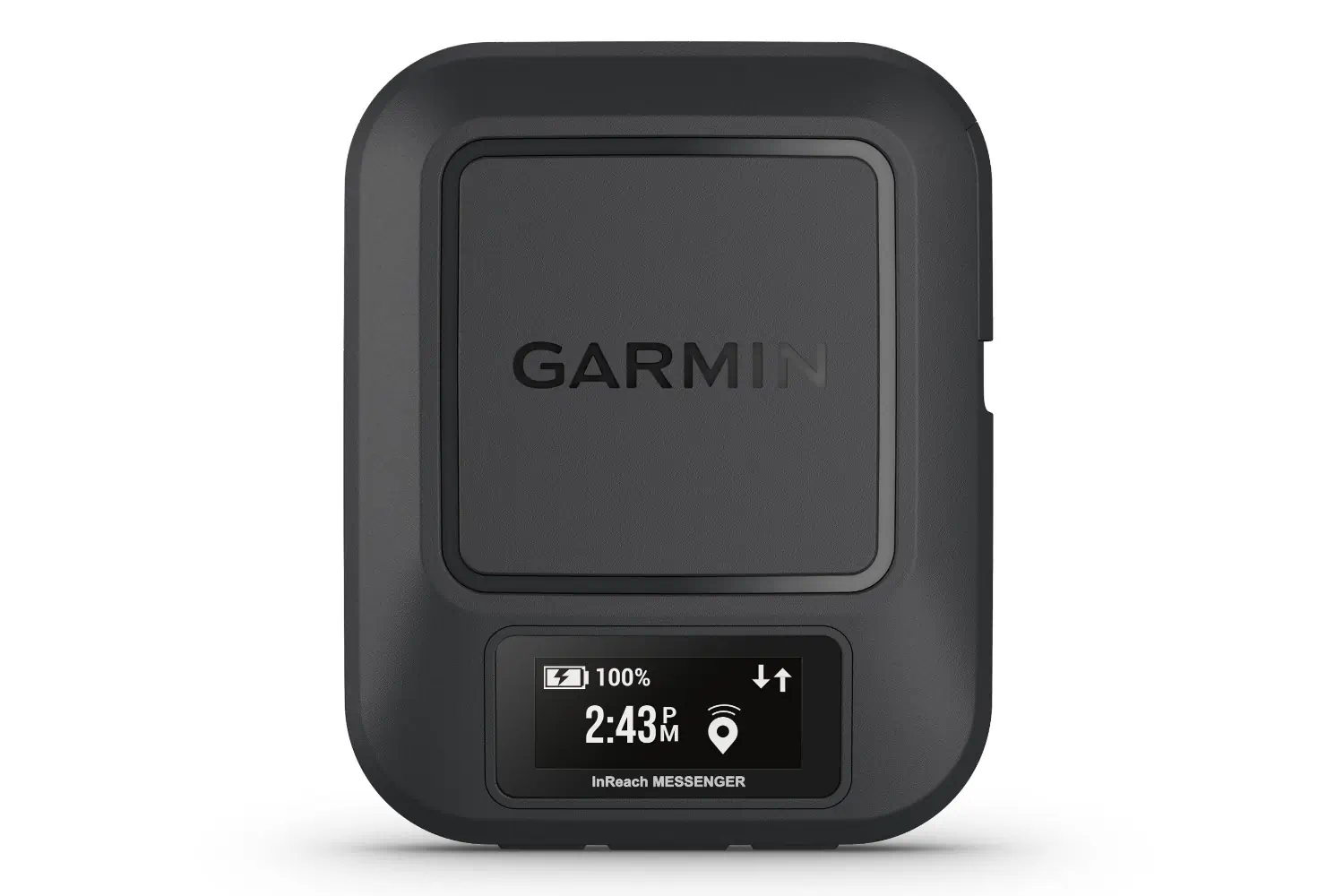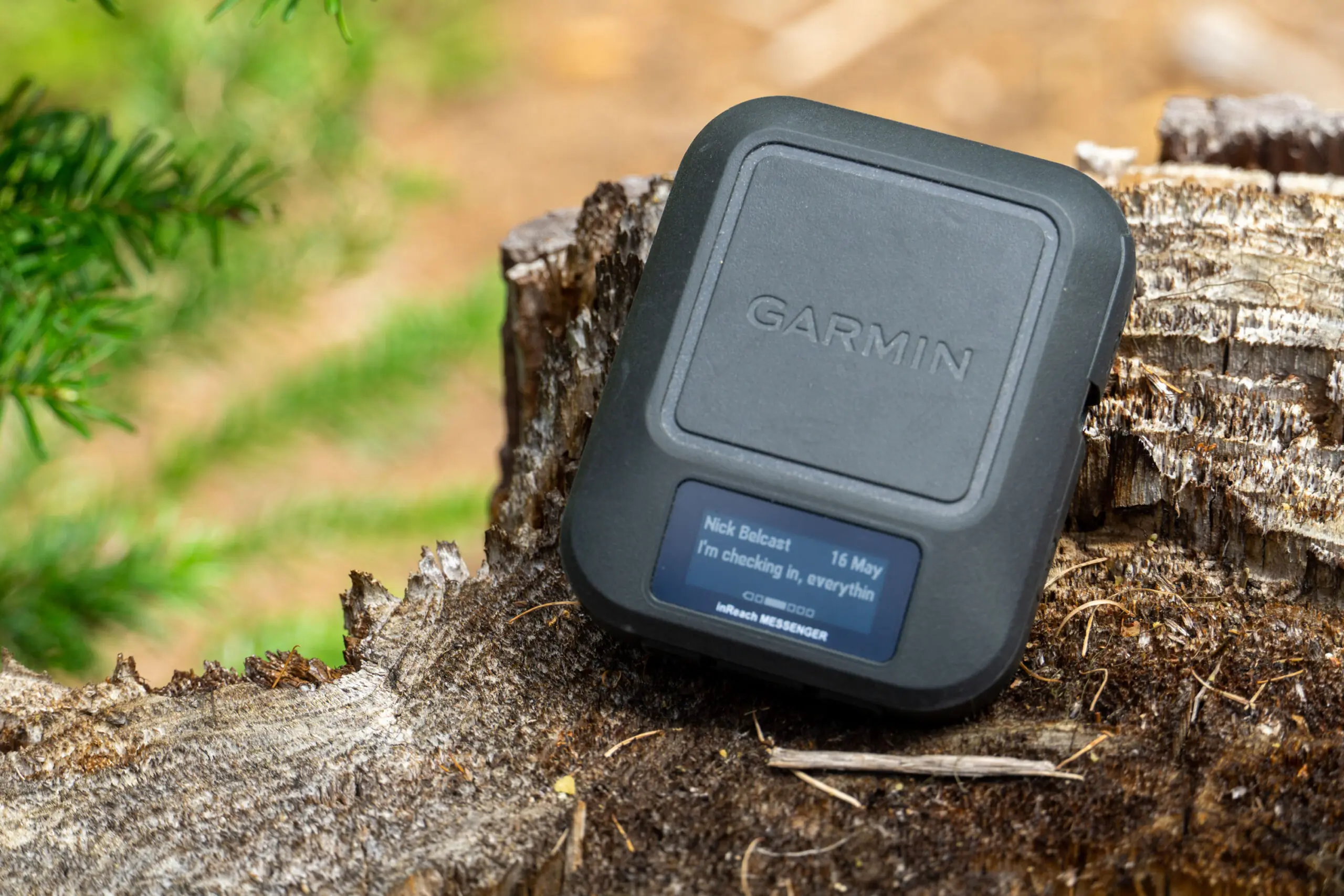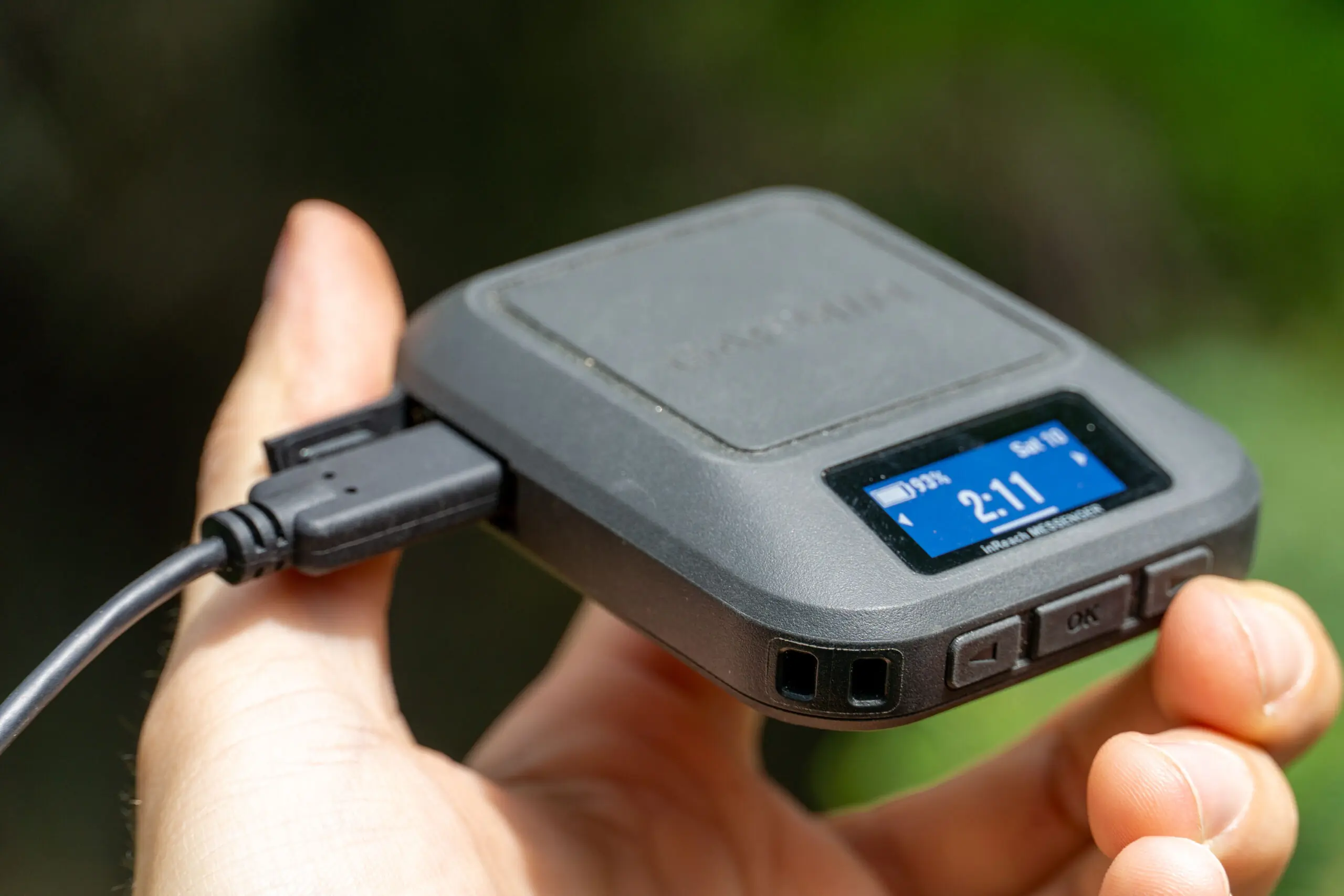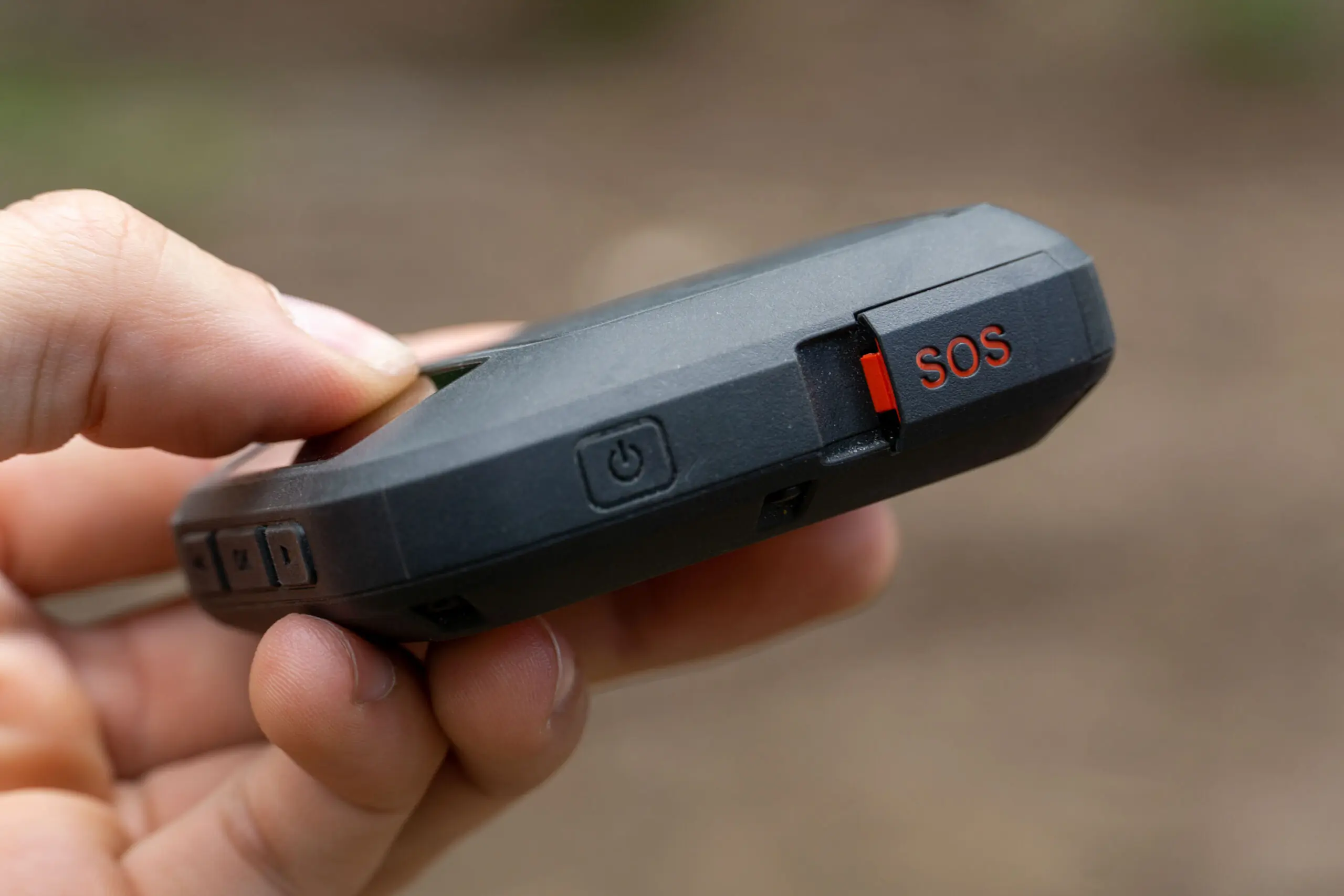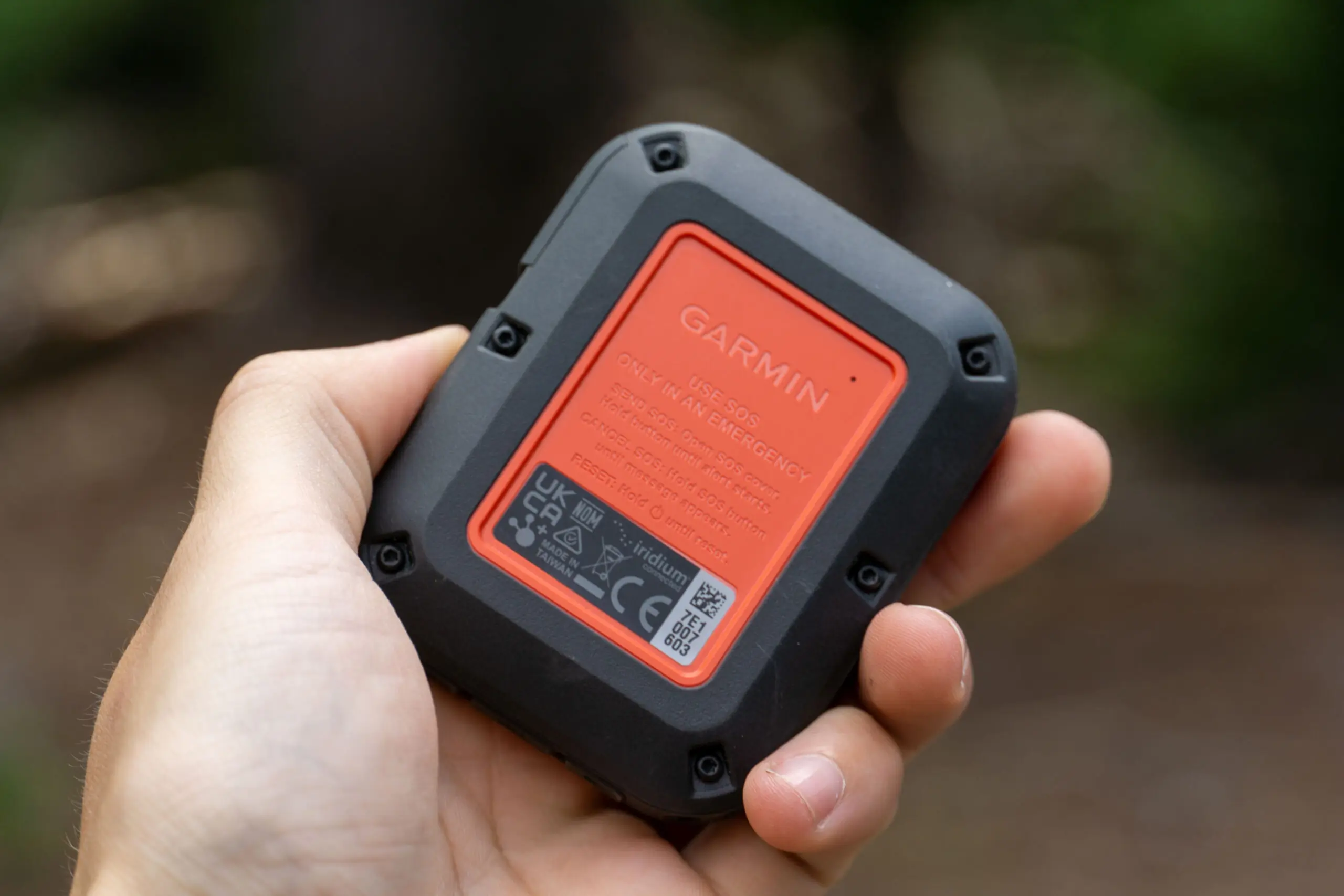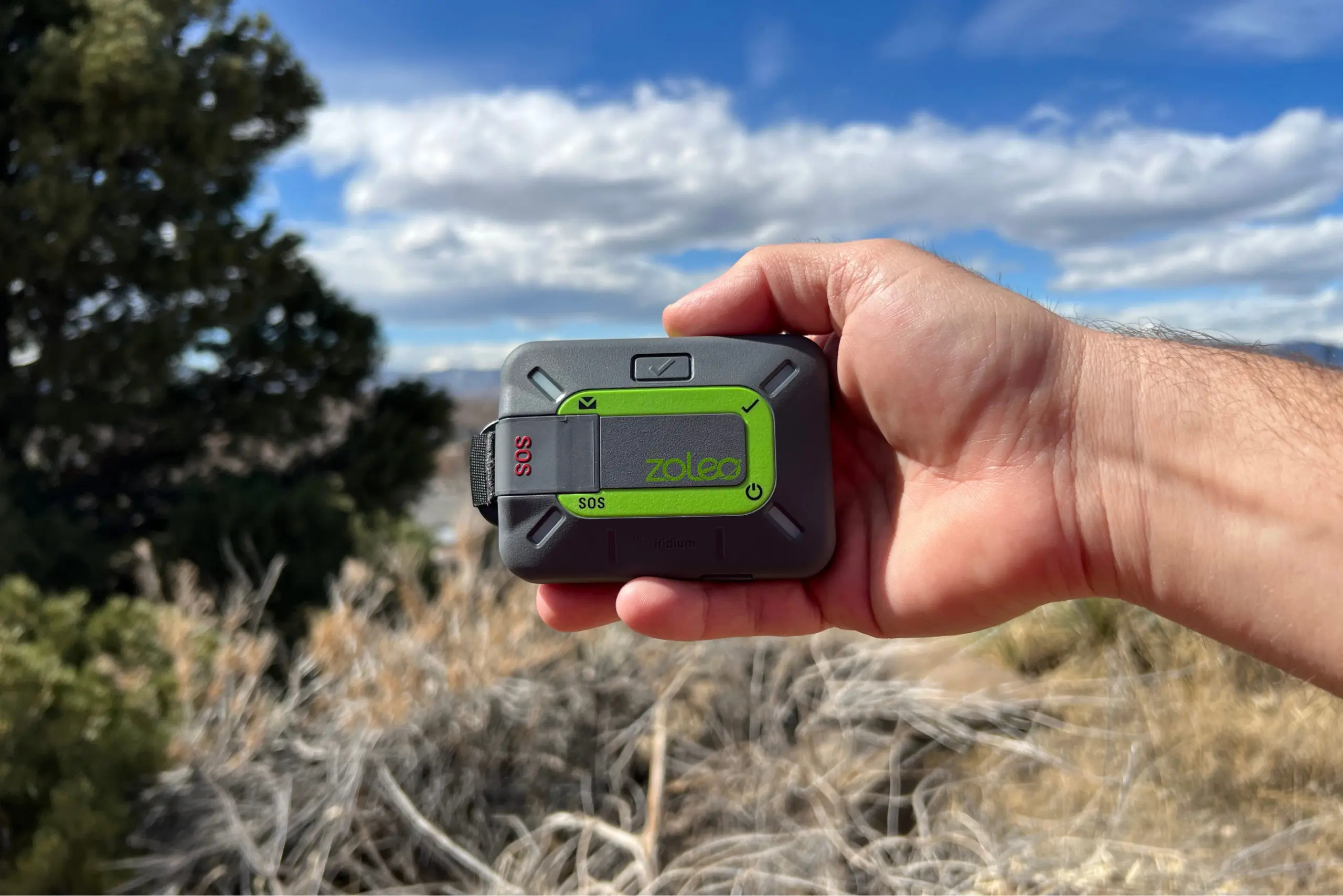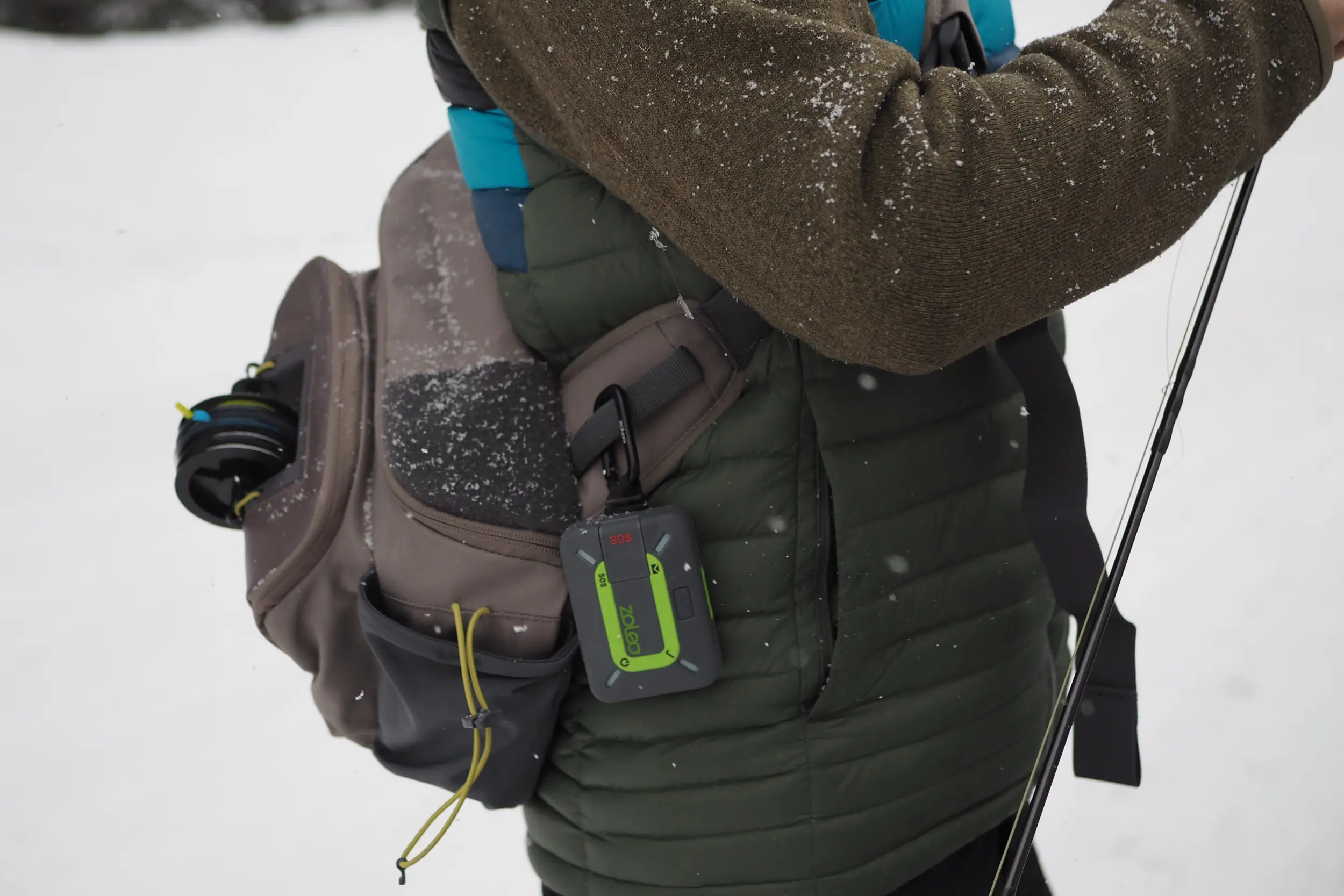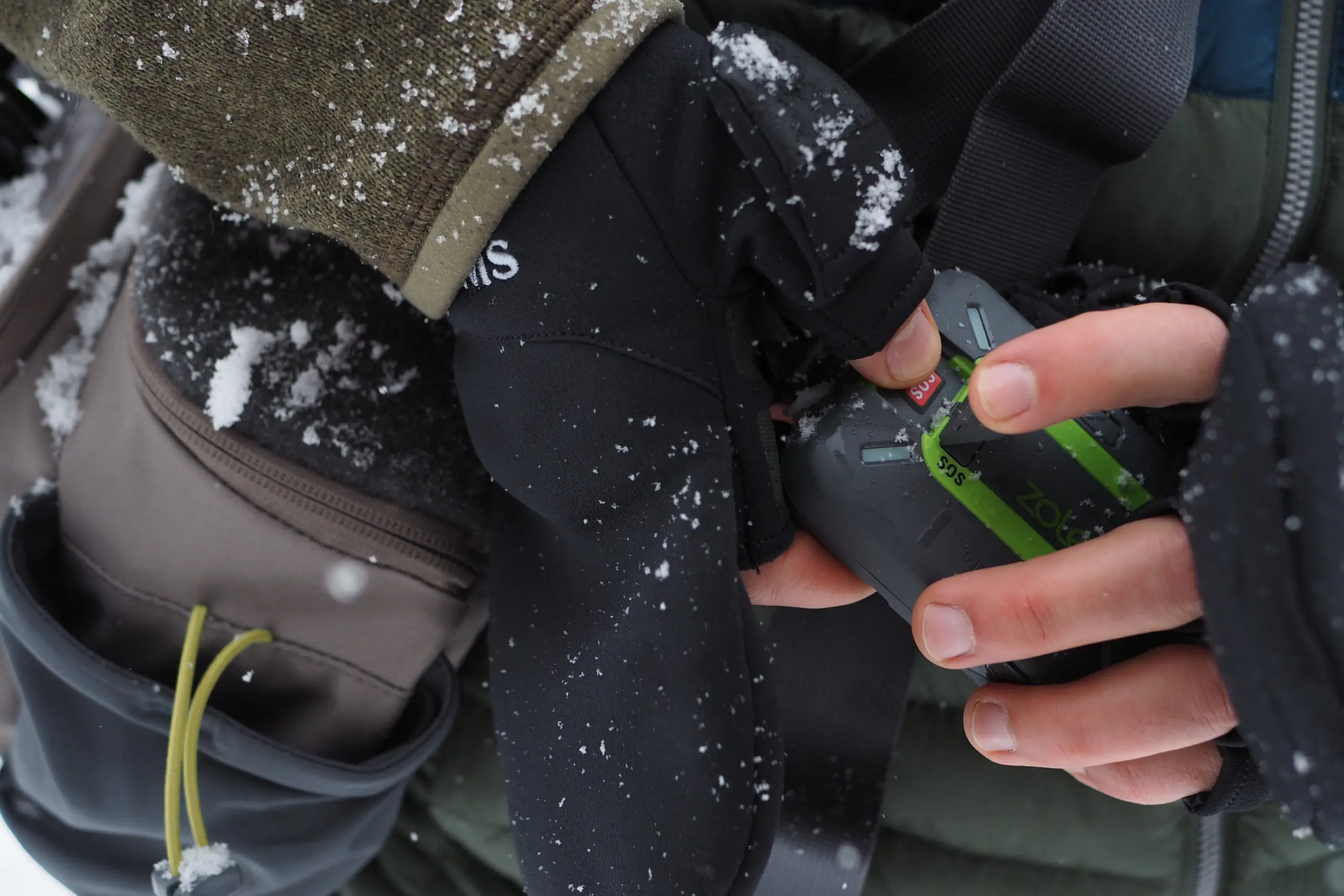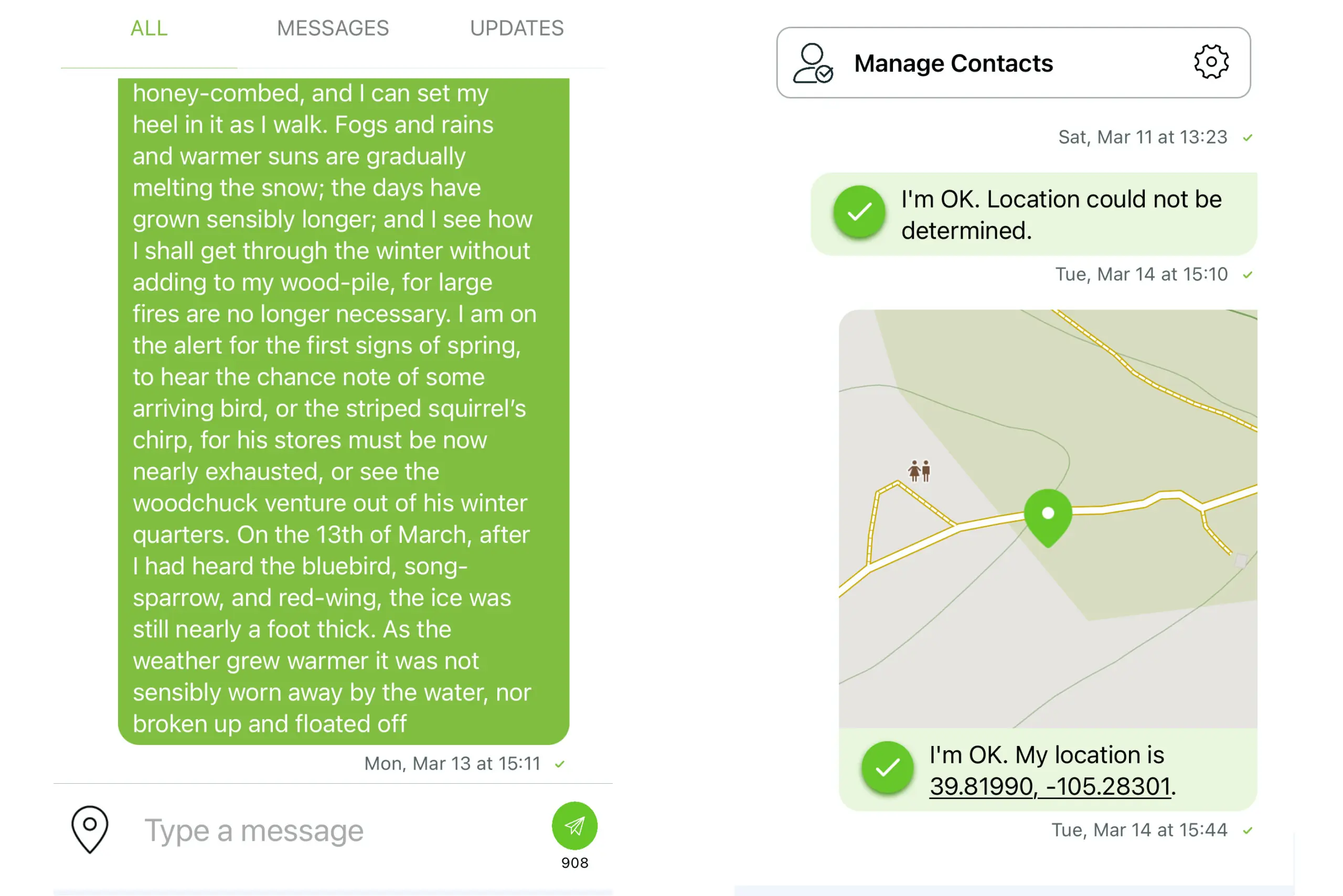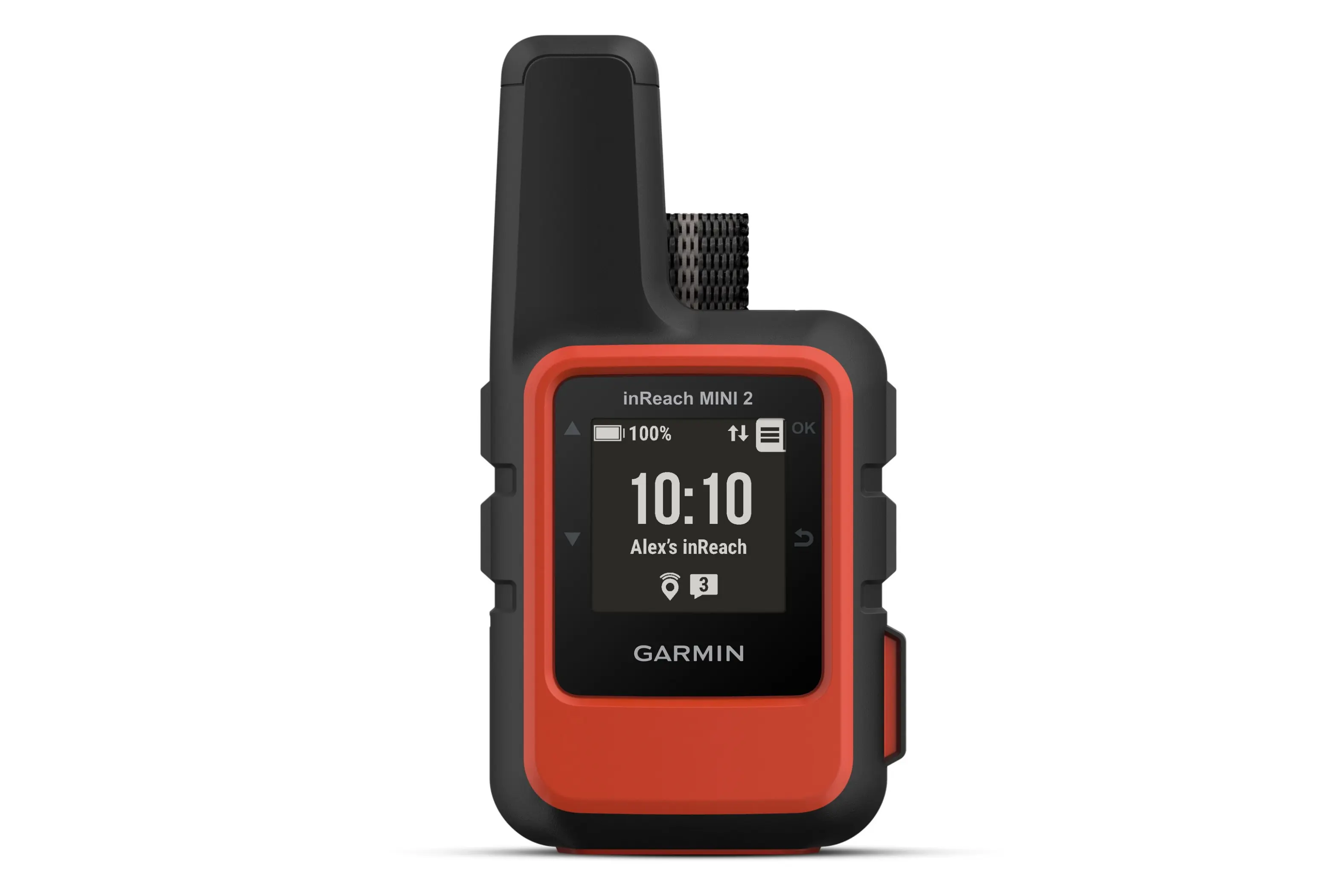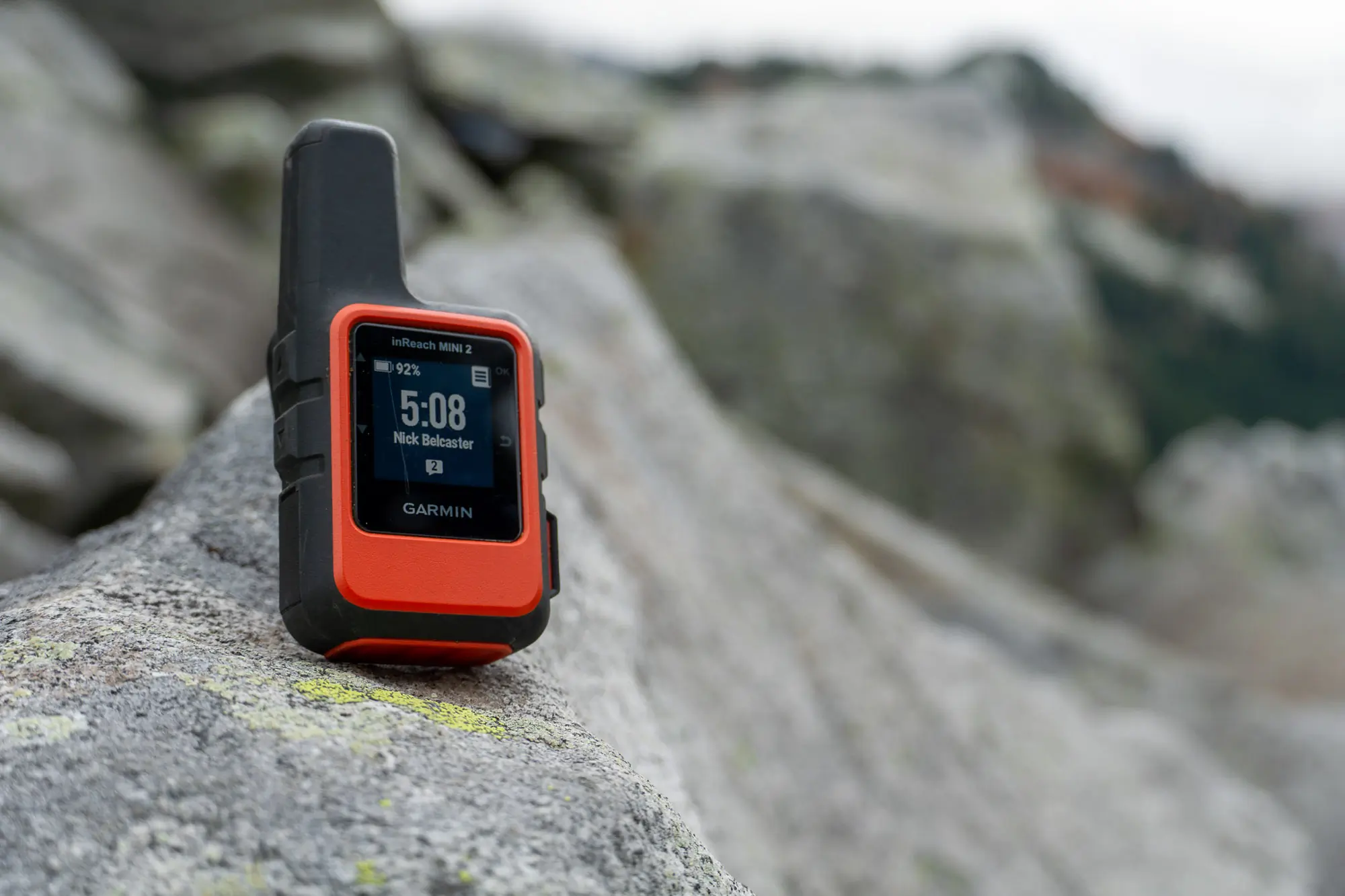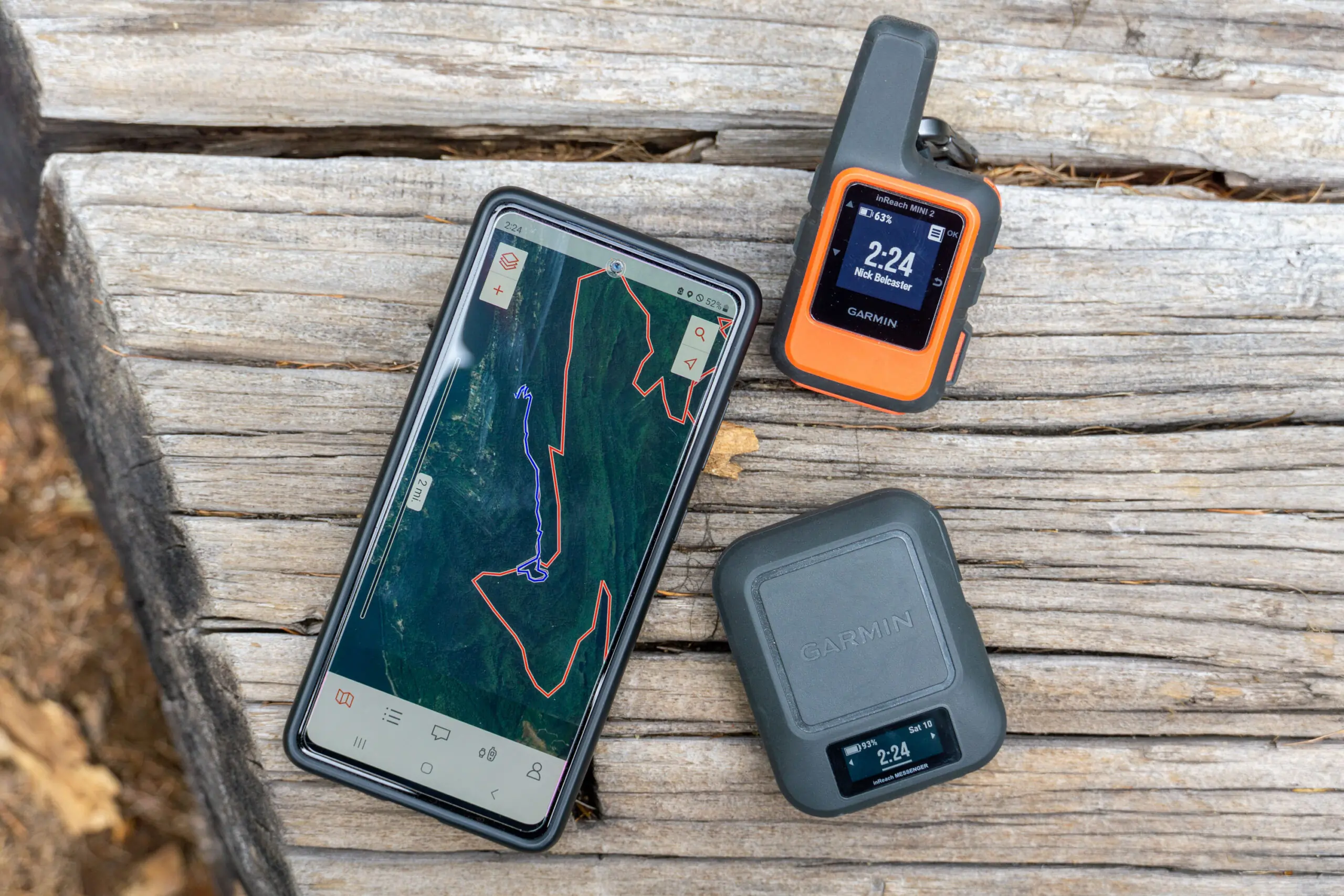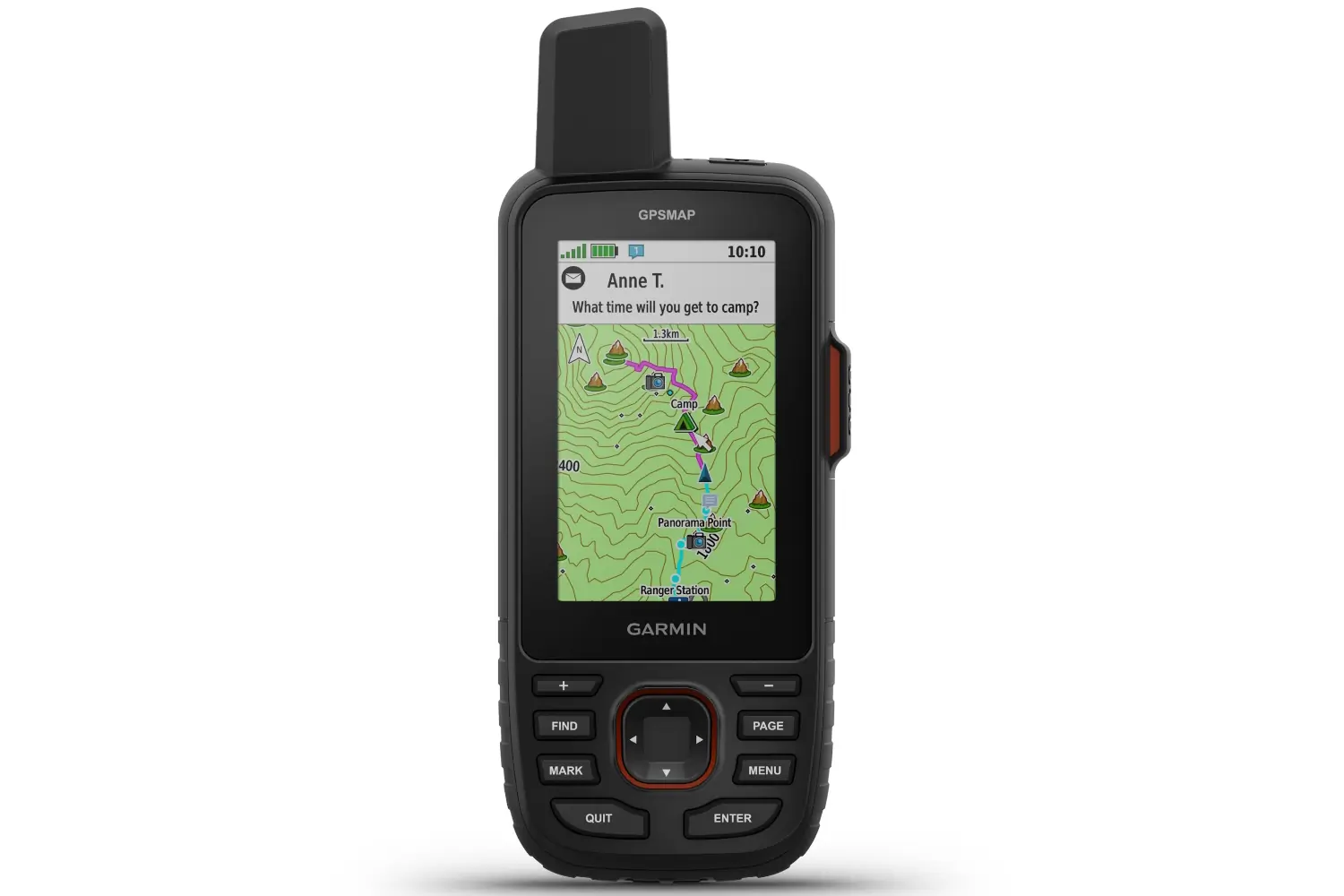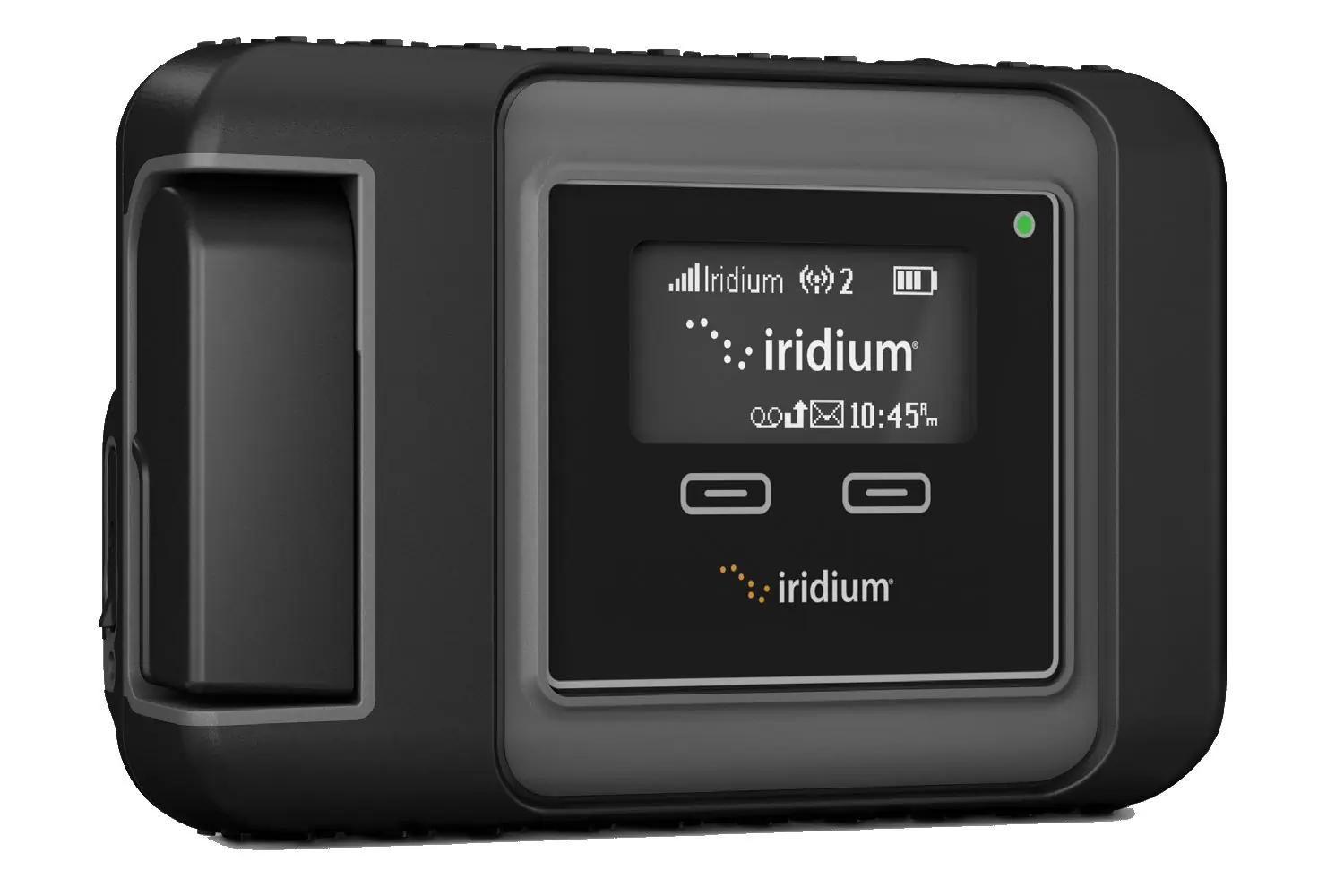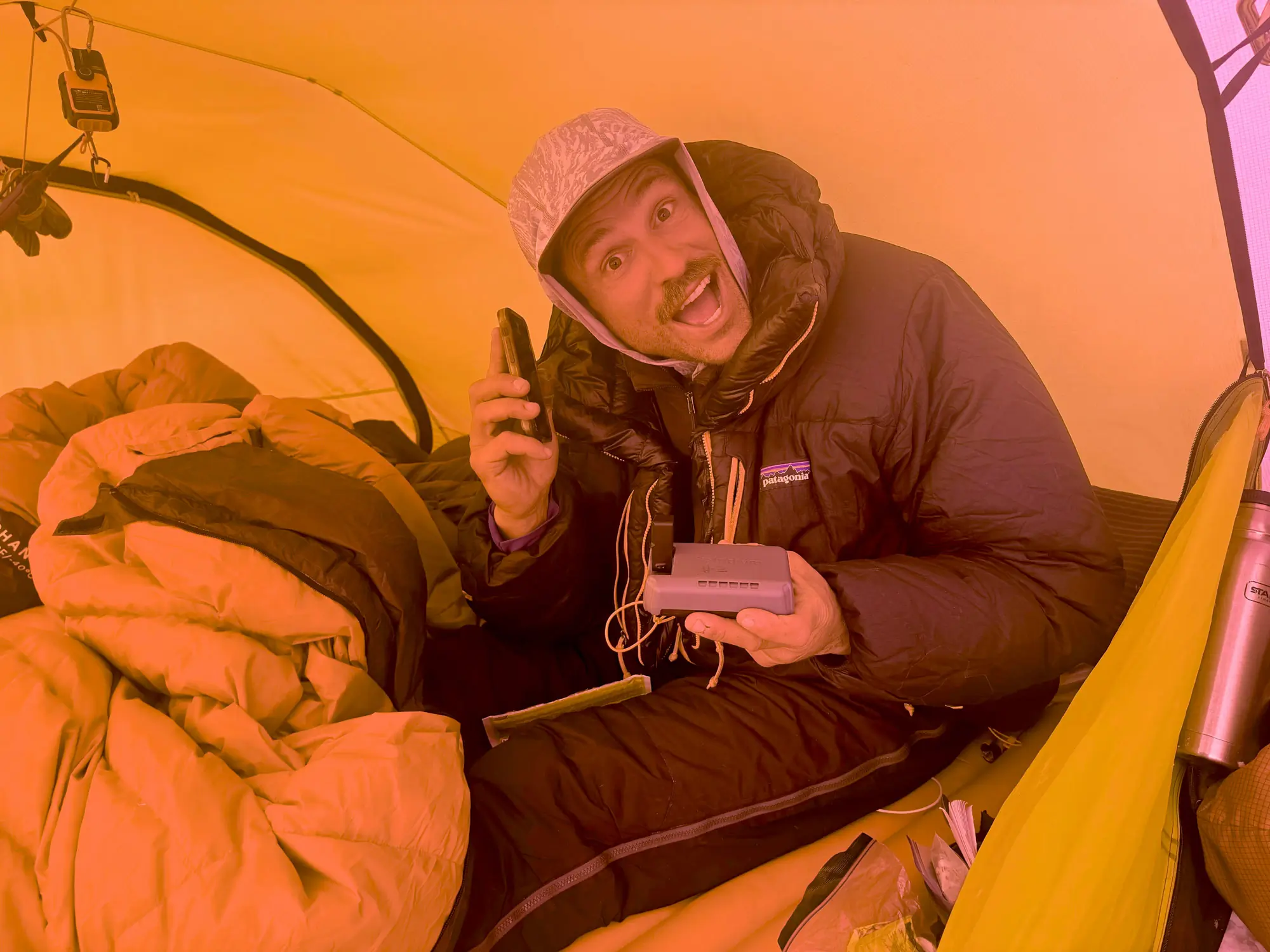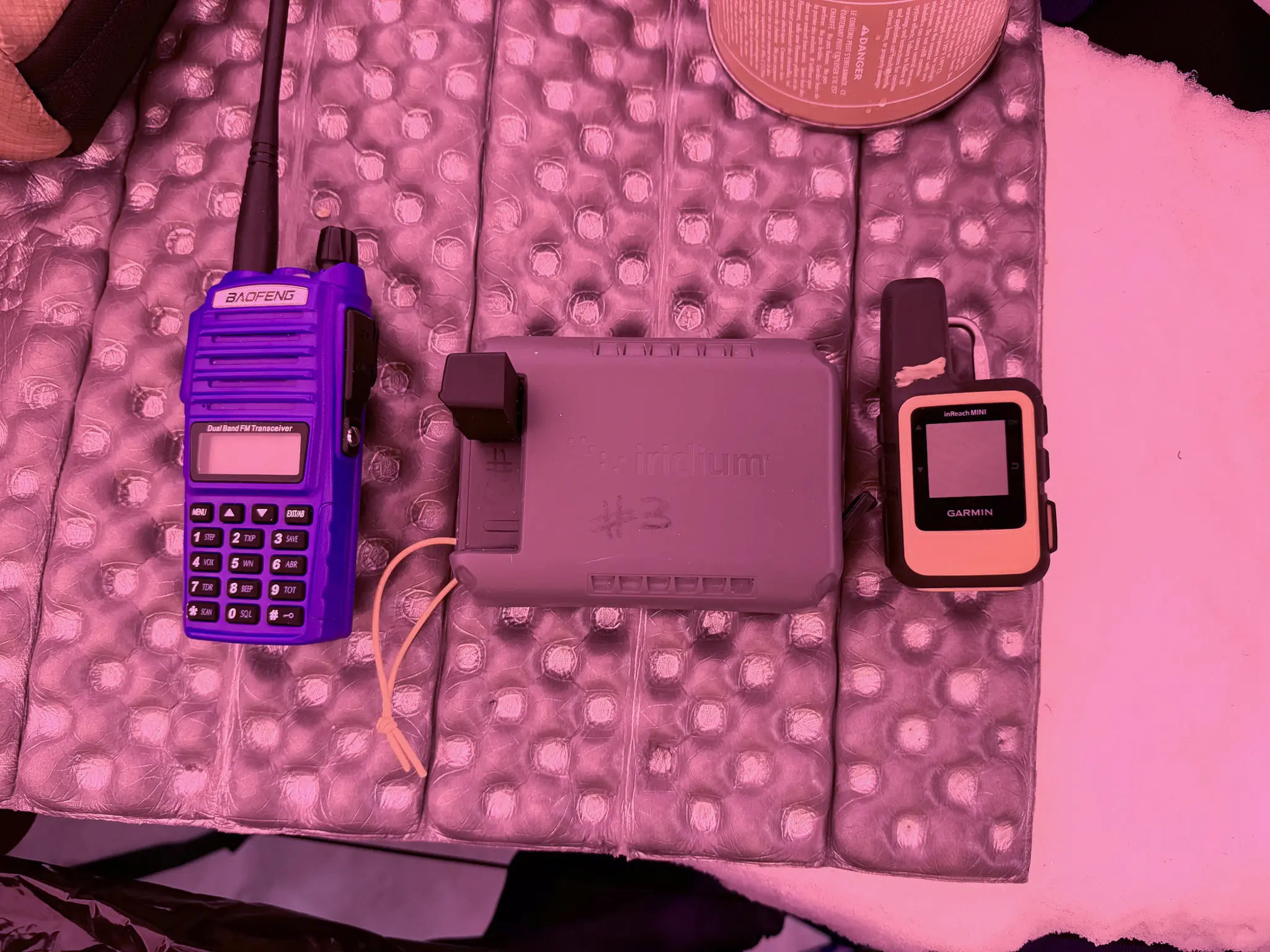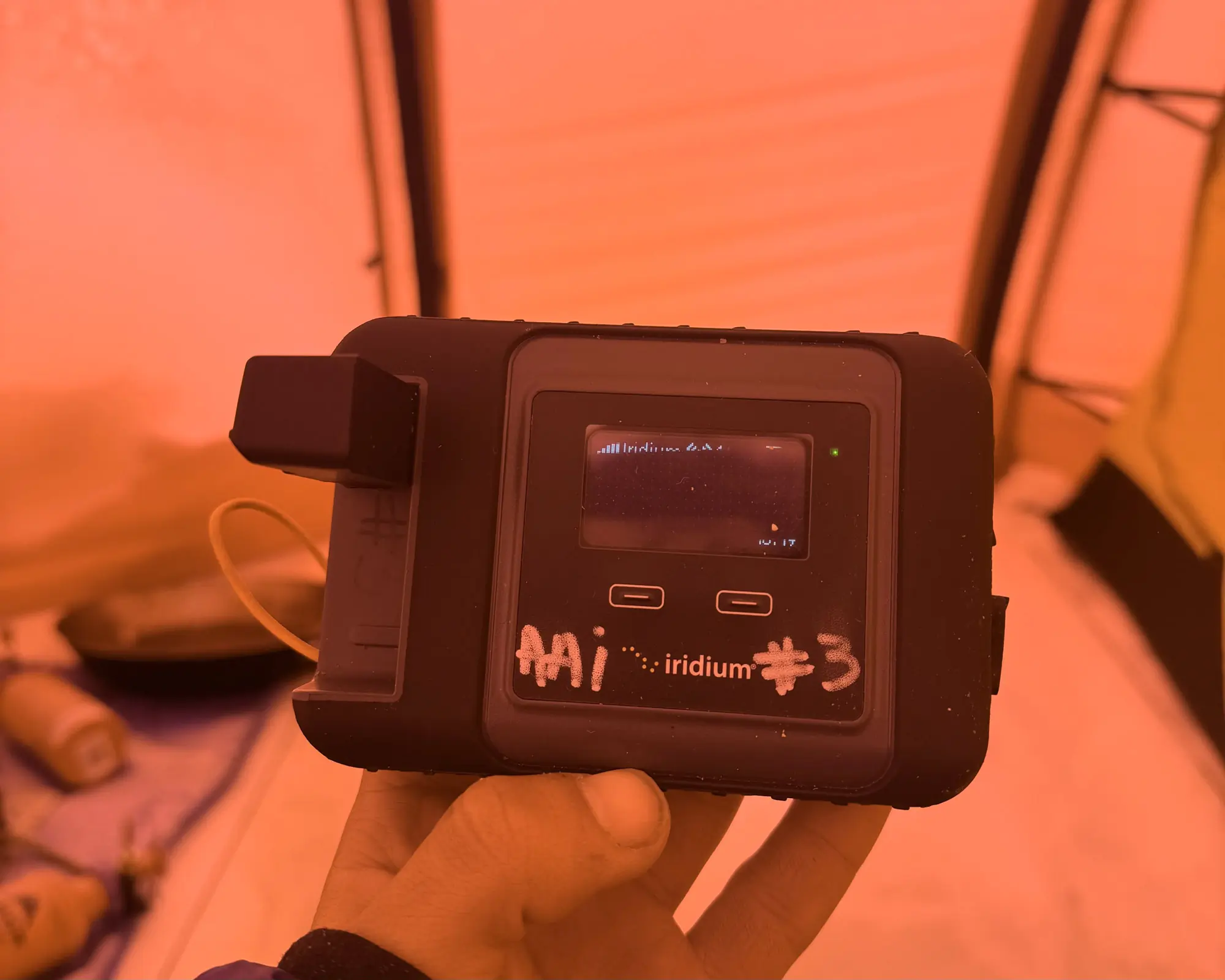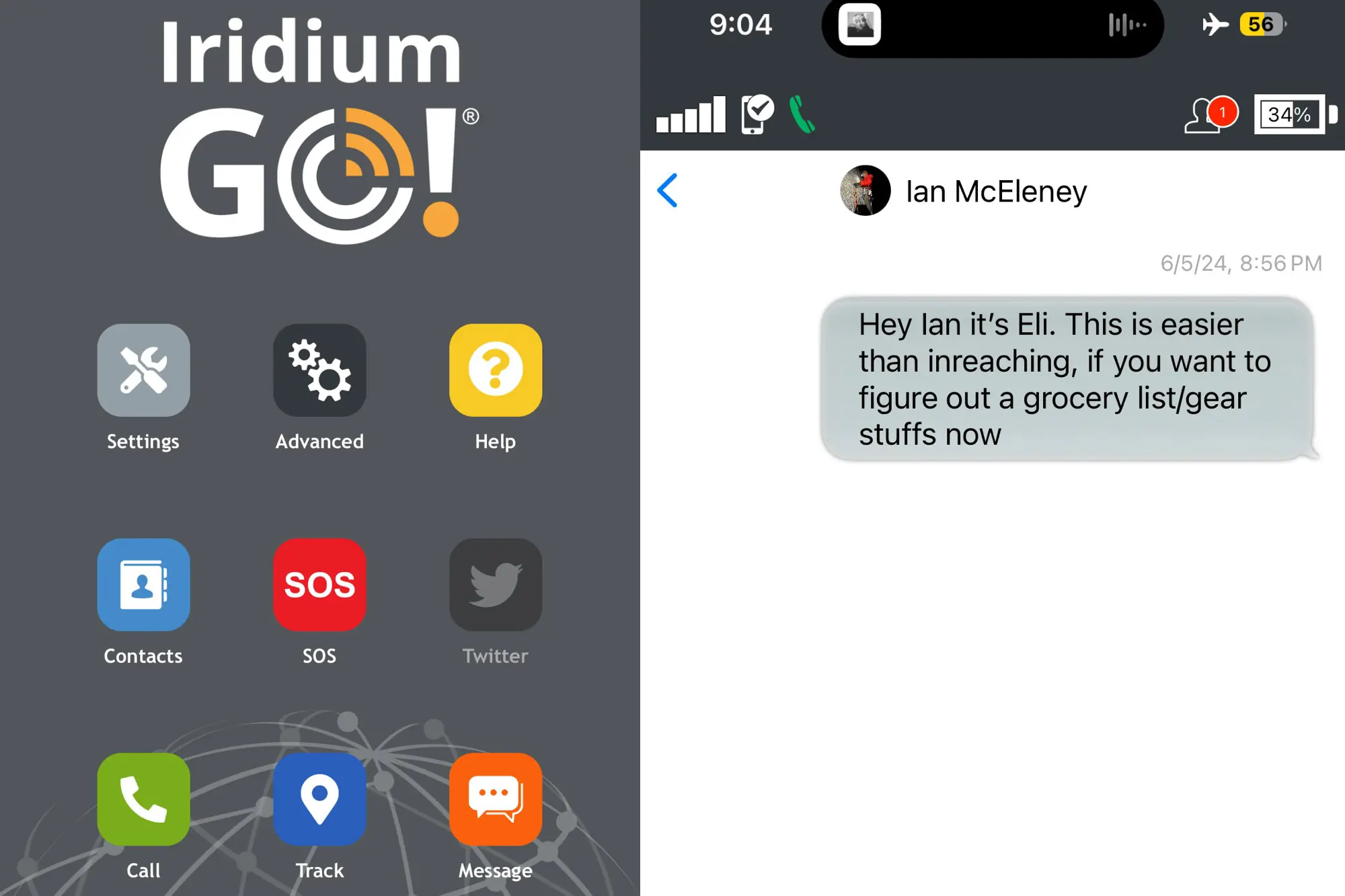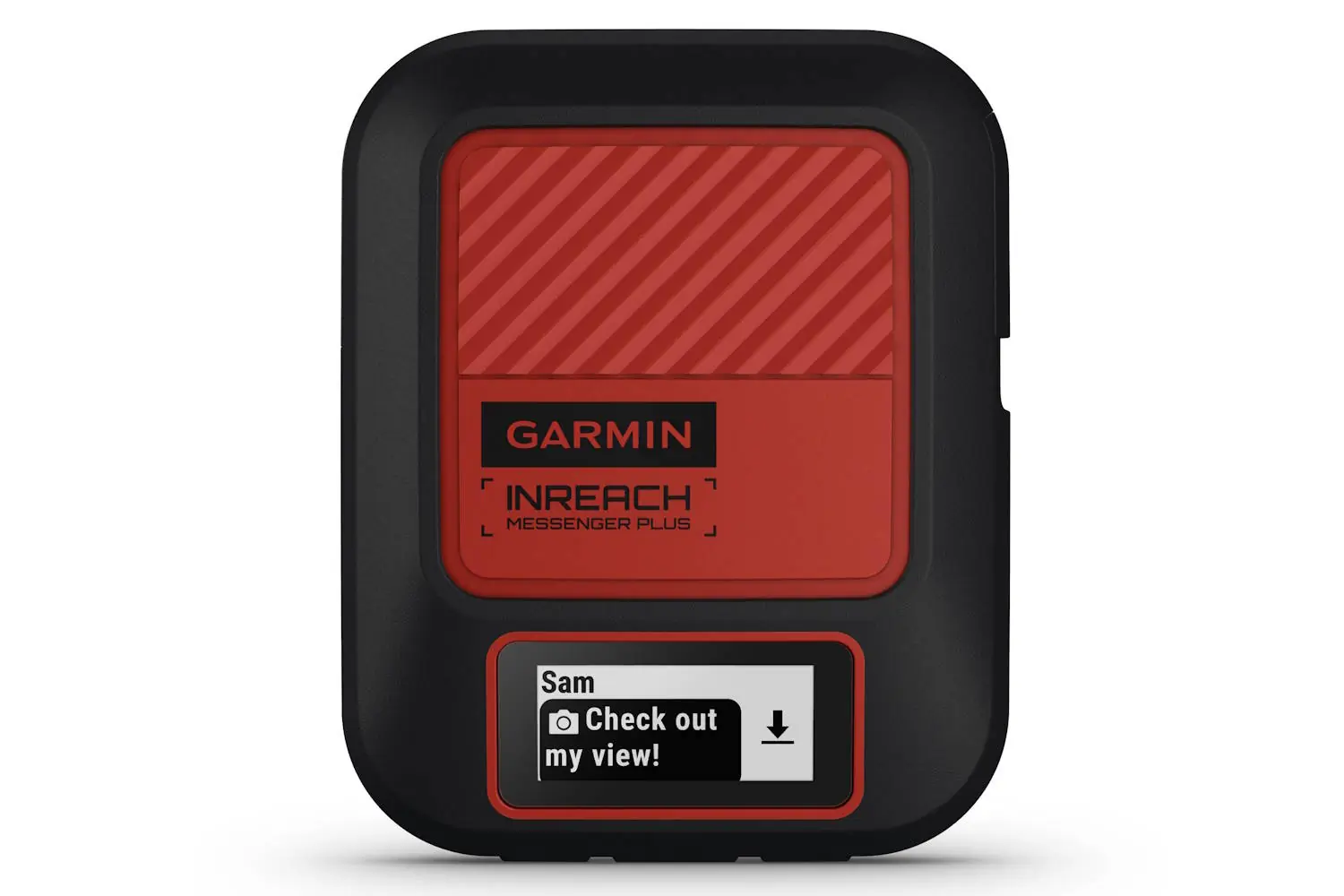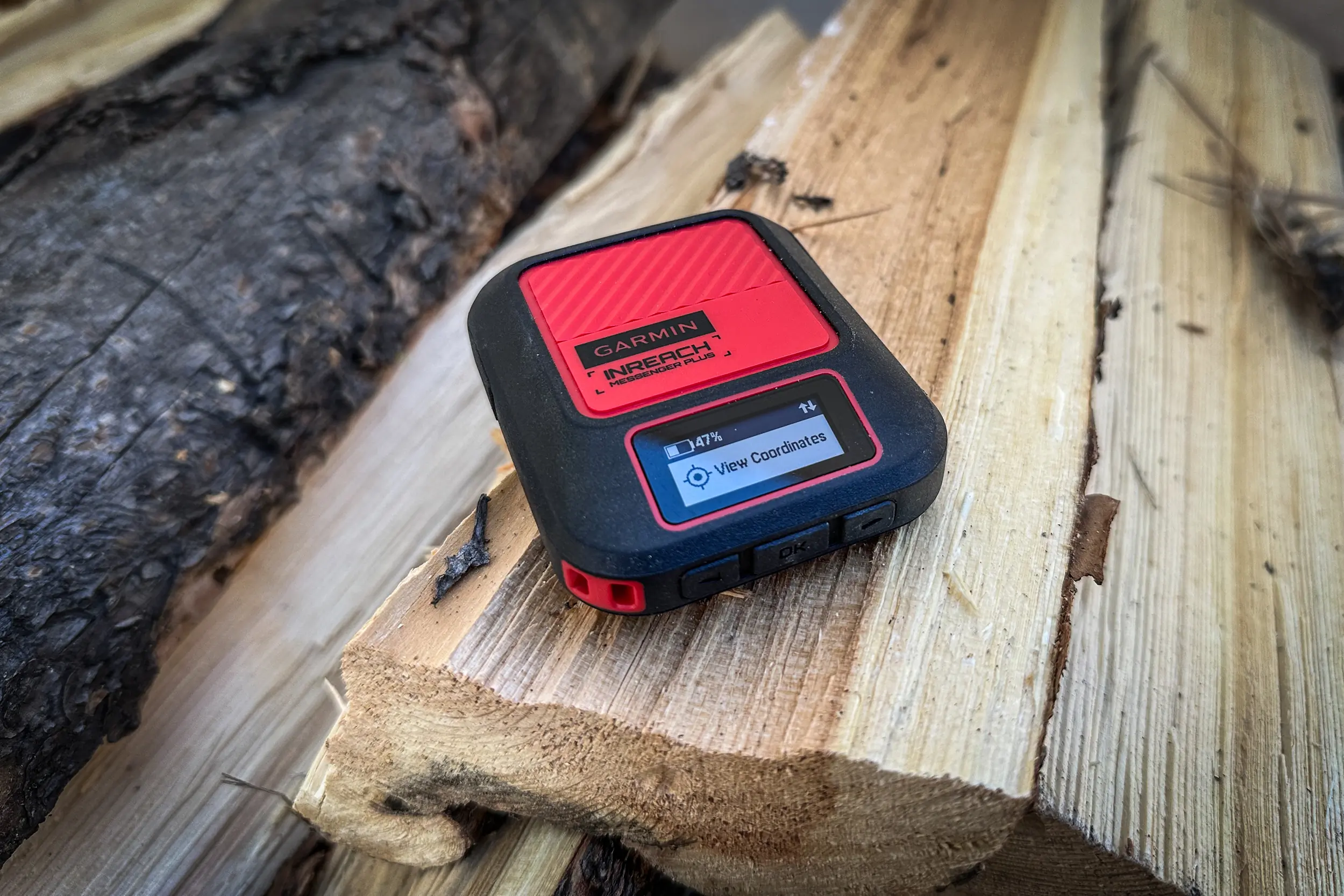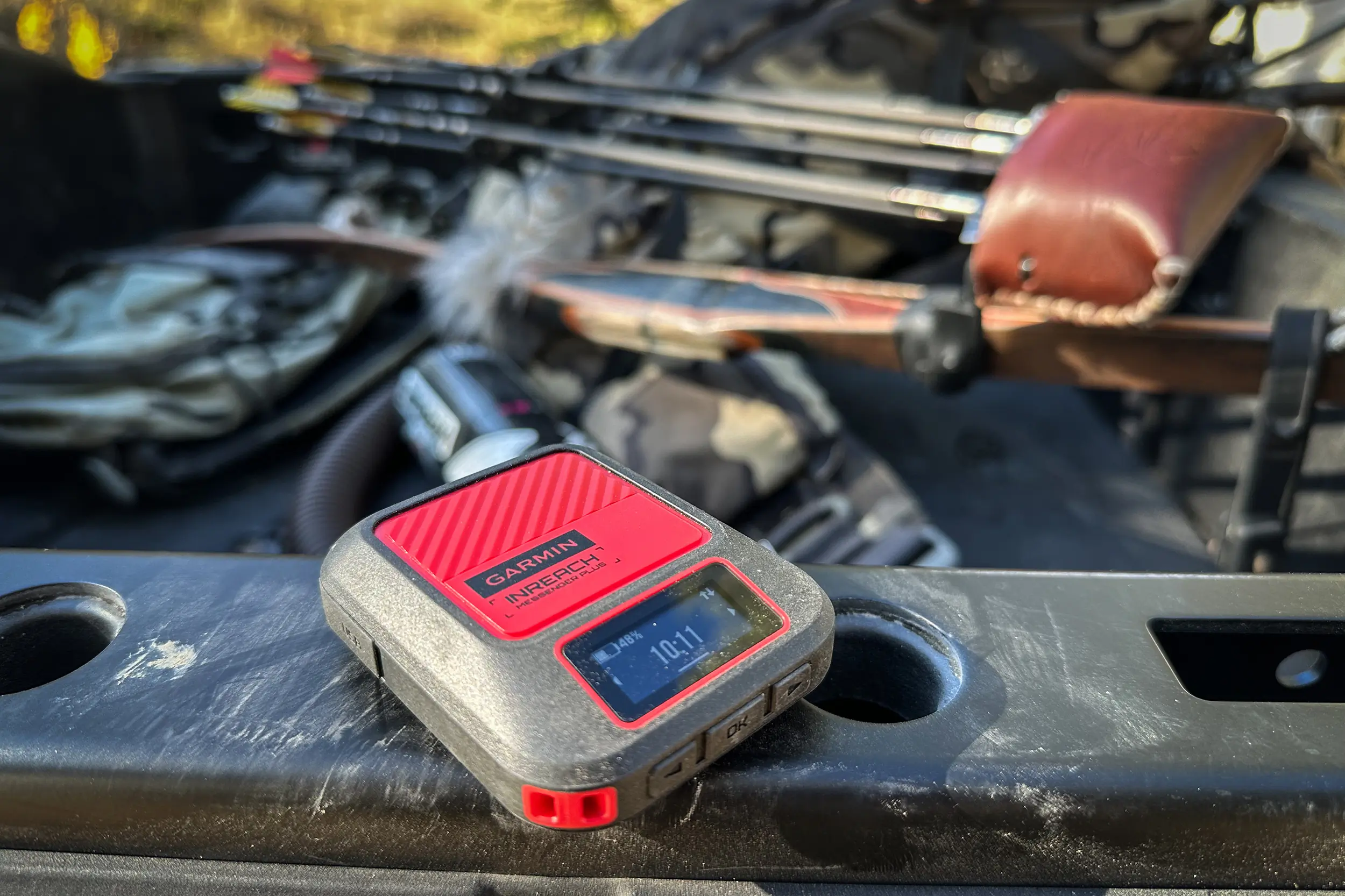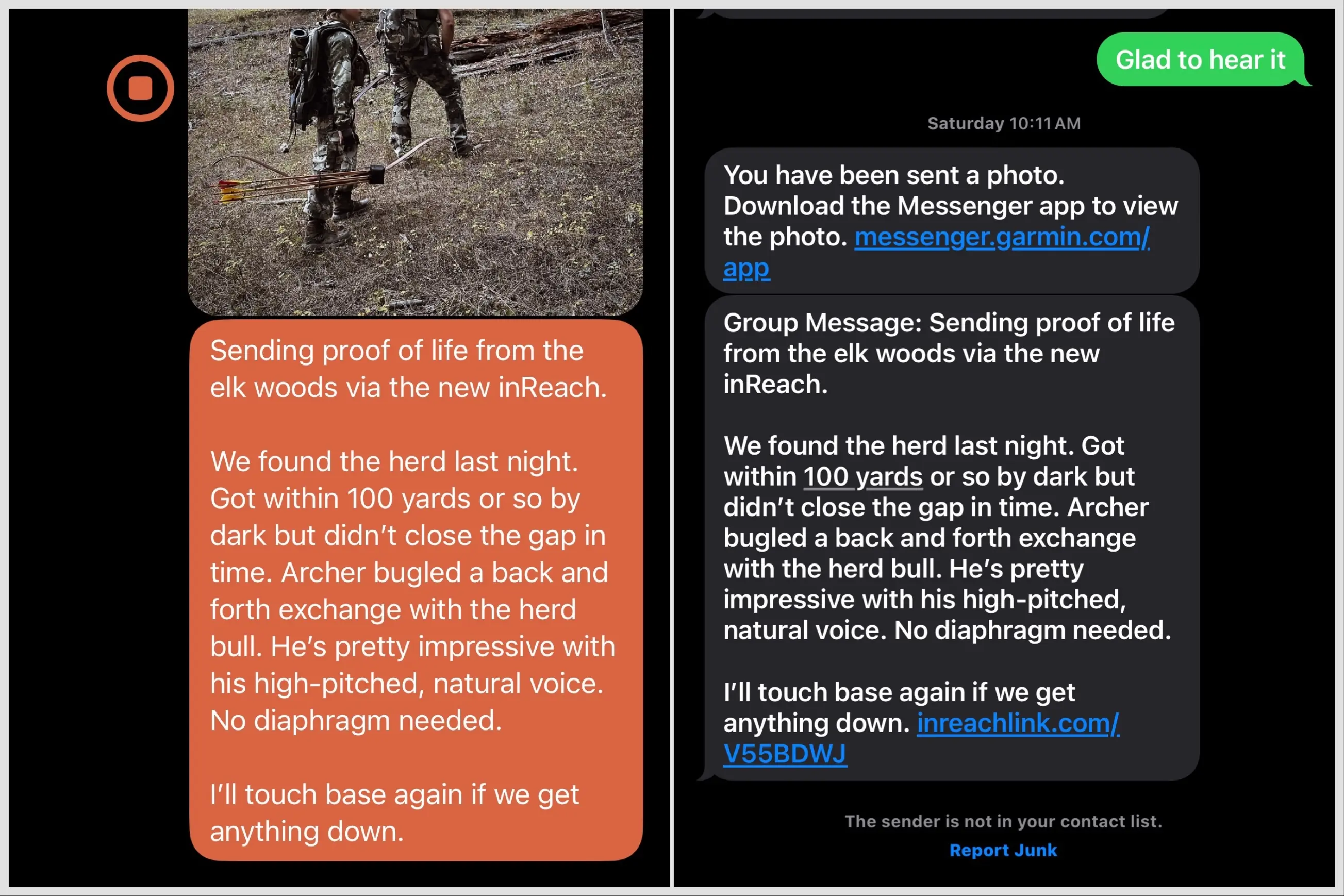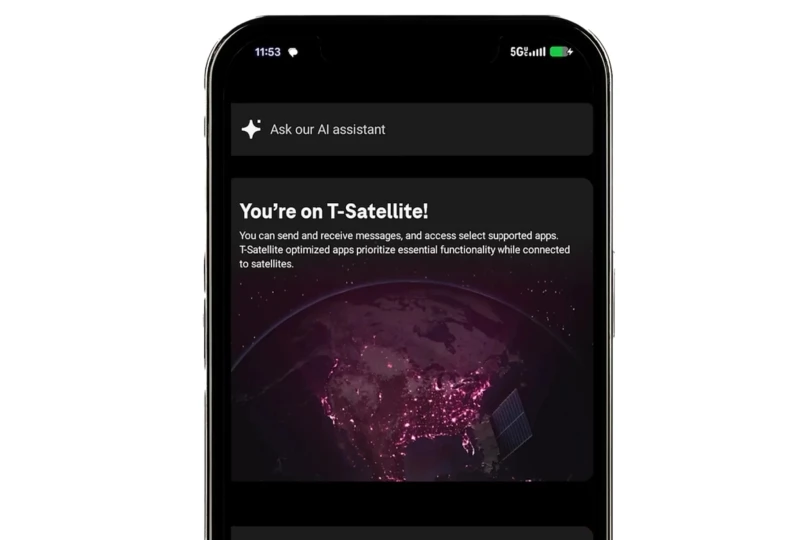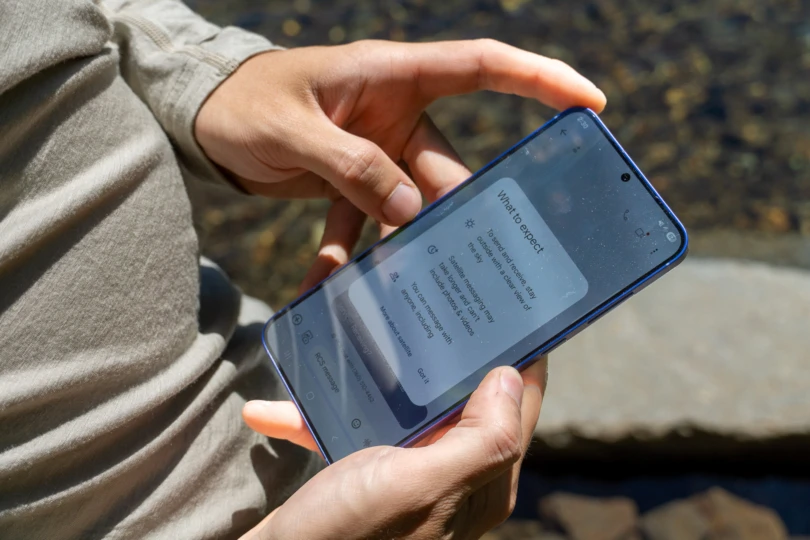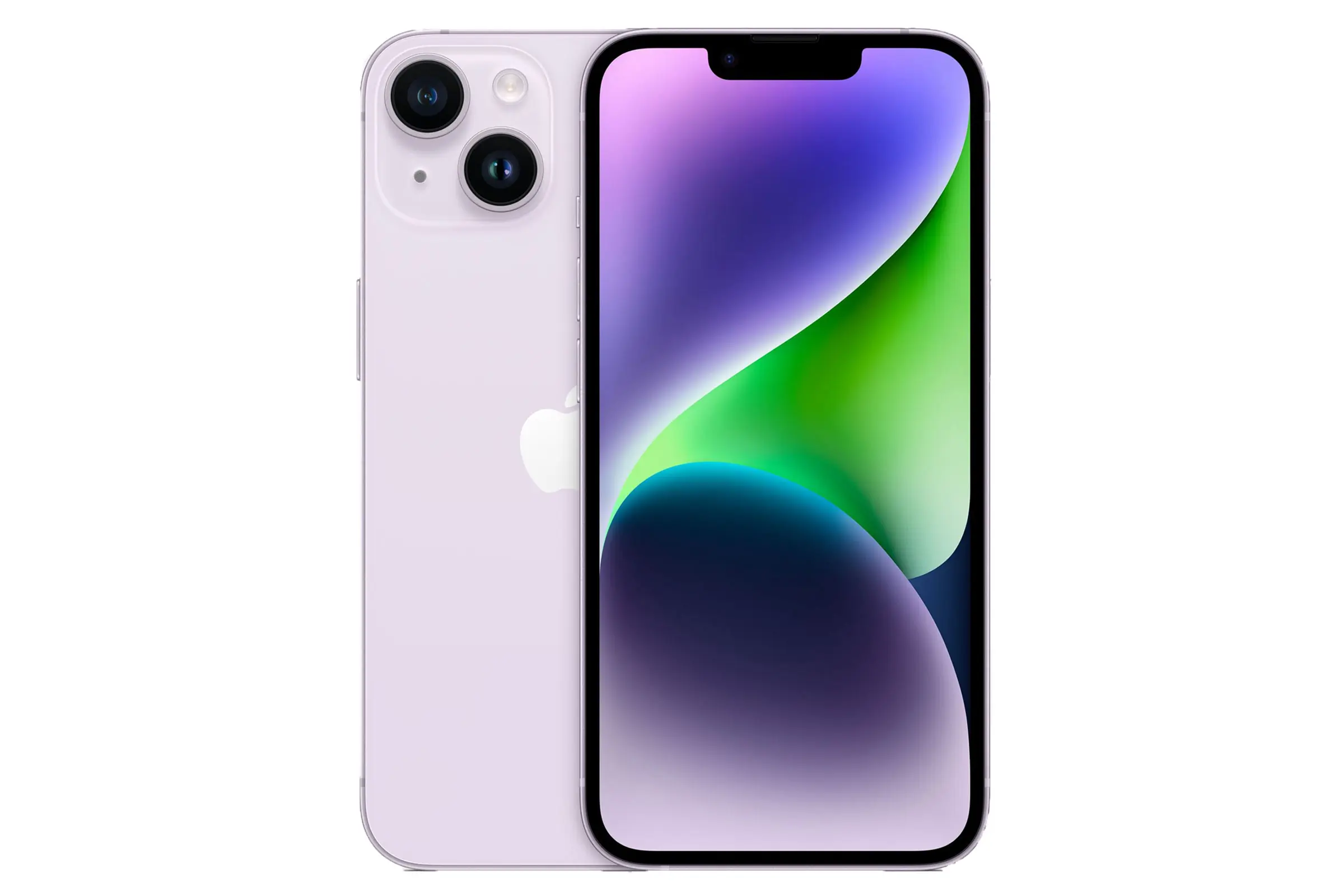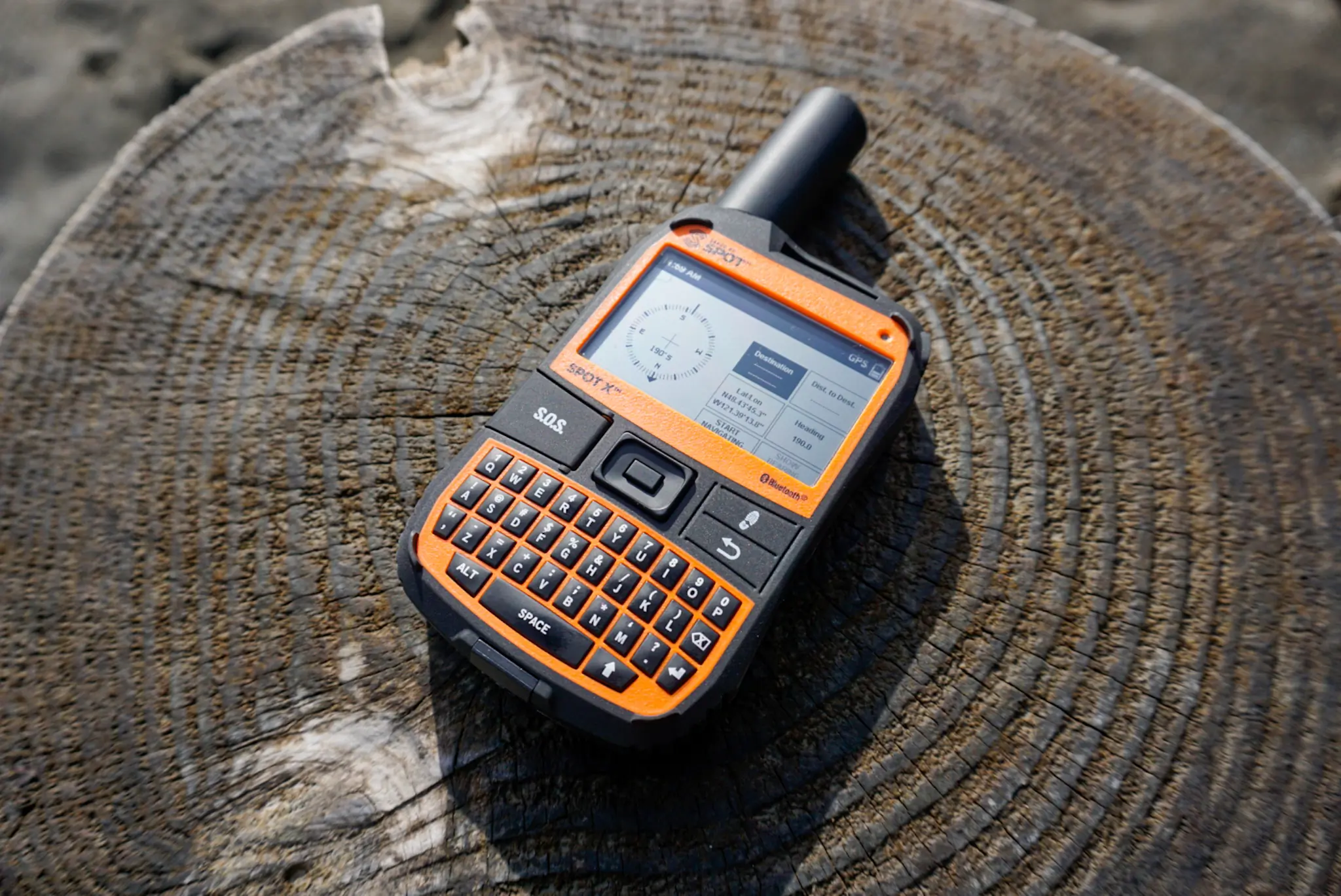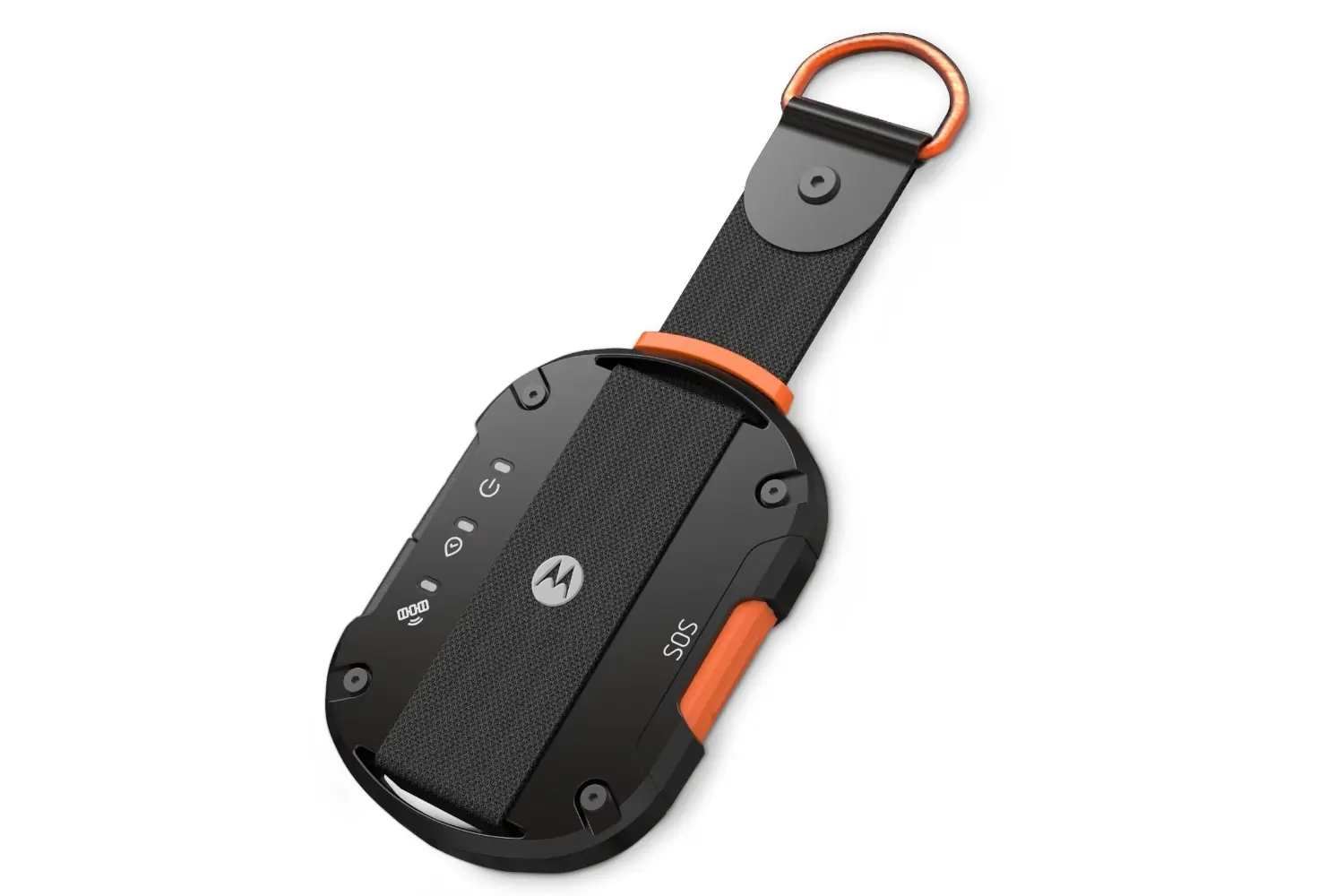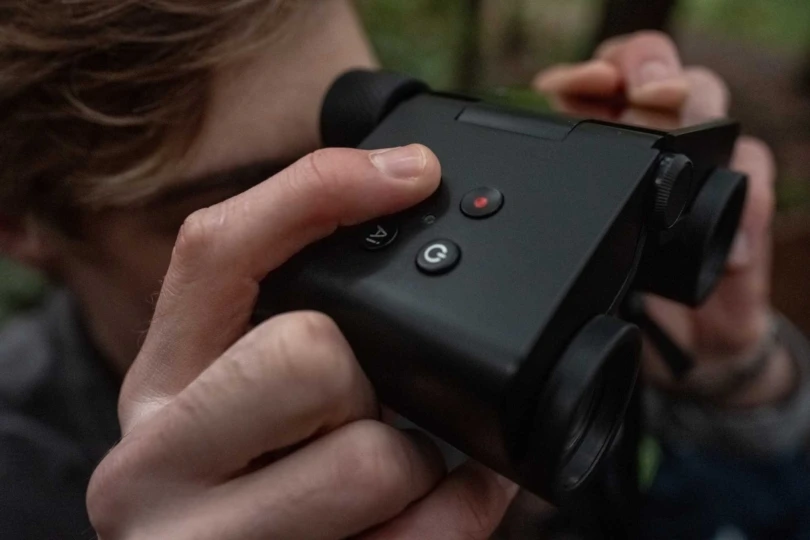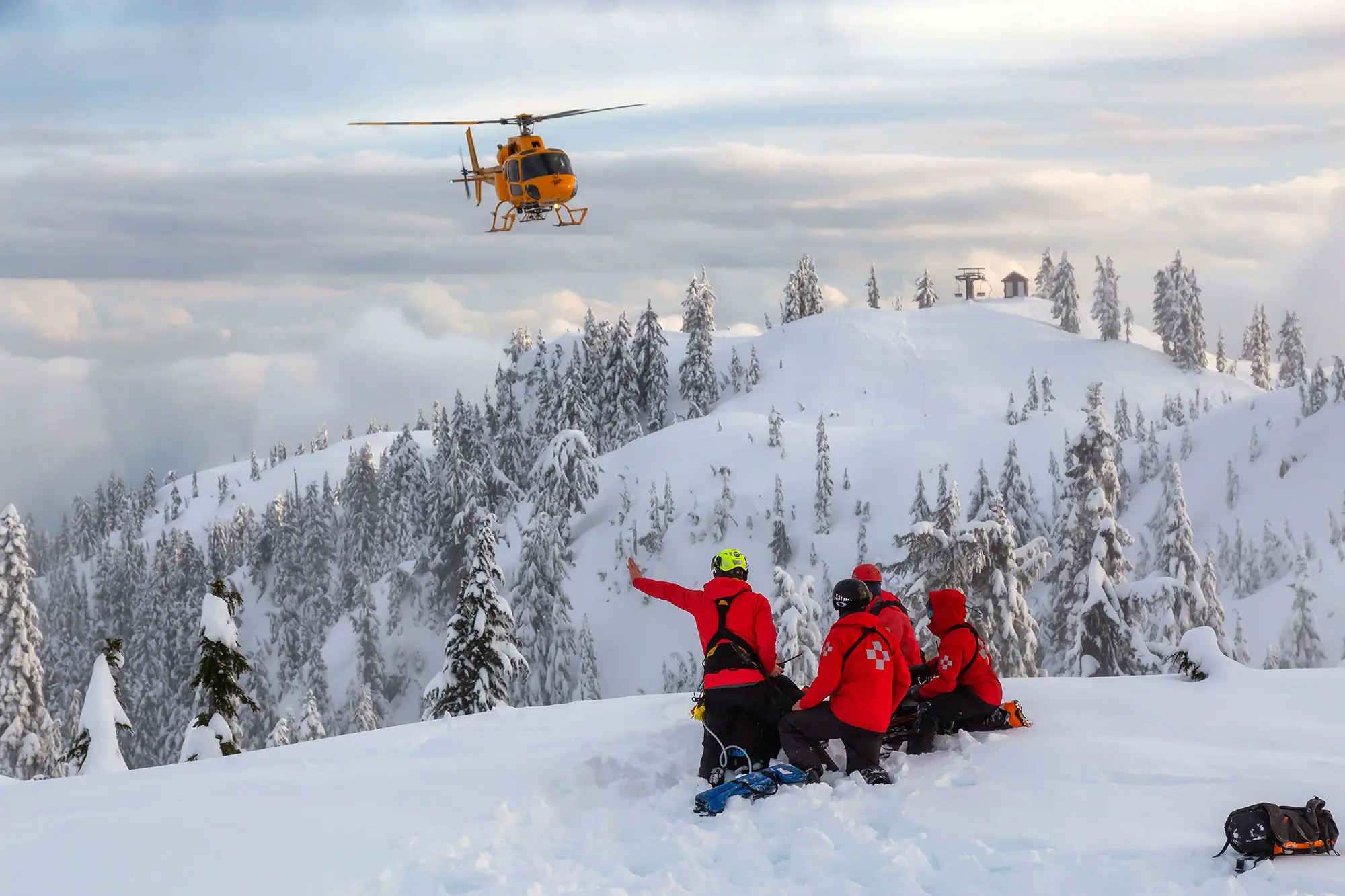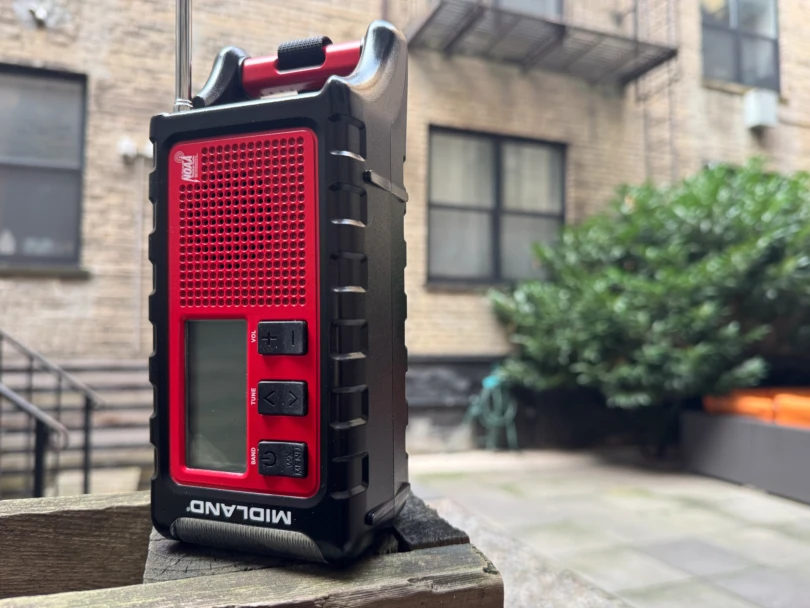We’ve been deep in the backcountry for years, and our team of guides and intrepid wanderers has tested the best satellite messengers on both professional and casual expeditions. Besides getting lost, we keyed in on the most important features you’ll need to get the message out and found the seven ideal devices for any situation.
The team and I have put each device through its paces over several years now — testing it all from typing ability to durability while getting dirty in the mountains of the Pacific Northwest and the expanses of the Southwest. I even went global with these messengers: challenging reception across Iceland and from the bottom of the world in Patagonia.
While satellite messaging capabilities are coming to mobile phones soon, I still see great utility in carrying a solid device like the Garmin inReach Messenger, our top pick. And if you just need a simple backup device, the budget ZOLEO Satellite Messenger is a solid companion. When push comes to shove, the SOS button is only a press away.
Editor’s Note: We updated our Satellite Messengers guide on November 25, 2025 to add our thoughts on the new T-Mobile / SpaceX T-Satellite Service. This is likely the future of on-phone satellite service, and it shows great promise looking forward. We also added new rating details to each messenger to aid in your comparison.
The Best Satellite Messengers of 2026
Garmin inReach Messenger
-
Messaging Ability
9.0
-
Feature Set
7.0
-
Battery Life
8.0
-
Durability
8.0
- Battery Life: 28 days
- Message Composition: On-device options/in-app
- Weight: 4 oz.
- Water Resistance: IPX7
- Satellite System: Iridium
- Subscription Plan: $14.99 per month for annual 'Consumer: Essential' plan
Pros
- Compact size and weight
- Access to global Iridium satellite network
- In-depth functionality
- Extended battery life with reverse USB-C charging
Cons
- Small screen for on-device typing
- Higher initial cost
ZOLEO Satellite Messenger
-
Messaging Ability
7.0
-
Feature Set
6.0
-
Battery Life
7.0
-
Durability
7.0
- Battery Life: 200 hours
- Message Composition: In-app composition
- Weight: 5.3 oz.
- Water Resistance: IP68
- Satellite System: Iridium
- Subscription Plan: $20 /month for 'Basic' plan
Pros
- Budget price
- Combination of on-device and in-app functions
- Ease-of-use
- Stout Iridium satellite network reception
- Medical Assist function connects you to a medical professional
Cons
- Limited on-device functionality
- Cannot type messages directly on the device
- Chunky compared to some other devices
Garmin inReach Mini 2
-
Messaging Ability
8.0
-
Feature Set
8.0
-
Battery Life
7.0
-
Durability
7.0
- Battery life: 14 days
- Message composition: On-device options/in-app
- Weight: 3.5 oz.
- Water resistance: IPX7
- Satellite system: Iridium
- Subscription plan: $14.99 per month for annual 'Consumer: Essential' plan
Pros
- Compact size and external carabiner for clipping to packs
- Improved screen over predecessor
- On-device navigation abilities (breadcrumb tracking, compass)
- Lightweight at under 4 oz.
Cons
- One of the pricer devices
- No cellular or Wi-Fi coverage
- Antenna isn't quite as good as the Garmin Messenger
Garmin GPSMAP 67i
-
Satellite Reception
8.0
-
Feature Set
9.0
-
Battery Life
8.0
-
Durability
8.0
- Battery Life: 180 hrs. in standard mode; 840 hrs. in expedition mode
- Battery Type: Internal Li-ion rechargeable battery
- Weight: 8.1 oz.
- Memory: 16 GB with expandable memory
- Screen Size: 3" diag.
- Rating: IPX7, MIL-STD-810
- Connectivity: USB-C, Wi-Fi, Bluetooth, ANT+
- Sensors: GPS, Galileo, QZSS, Beidou, IRNSS / Barometer altimeter + compass
- Subscription Plan: $14.99 per month for annual 'Consumer: Essential' plan
Pros
- Incredible updated battery life over previous model
- Large, bright, easy-to-see display
- On-board messaging capabilities
- Waterproof rating of IPX7
- Expanded global navigation system and multiband technology
Cons
- Larger overall size
- Pricey if you don't need the GPS abilities
Iridium GO!
-
Messaging Ability
9.0
-
Feature Set
9.0
-
Battery Life
7.0
-
Durability
8.0
- Network: Iridium
- Satellite coverage: Global
- Antenna: Flip-up, omnidirectional
- Text messaging: Yes, through Iridium GO! app
- Battery life: 5.5-hour talk, 15.5-hour standby
- Display: Monochrome
- Waterproofing: IP65 and MIL-STD 810F
- Size: 4.5" x 3.2" x 1.2"
- Weight: 10.7 oz.
Pros
- Voice calling and SMS texting with high character limit
- Email capabilities
- GPS tracking
- Programmable one-touch SOS button
- Stowable antenna for more compact design
Cons
- Inconsistent connection can make it difficult to convey adequate amounts of information effectively
- Heavy and large compared to other satellite communication devices
- Necessitates smartphone for functionality
- Relatively limited battery life
Garmin inReach Messenger Plus
-
Messaging Ability
10.0
-
Feature Set
9.0
-
Battery Life
8.0
-
Durability
8.0
- Battery Life: 25 days
- Message Composition: On-device options/in-app
- Weight: 4.1 oz.
- Water Resistance: IPX7
- Satellite System: Iridium
- Subscription Plan: $14.99 per month for annual 'Consumer: Essential' plan
Pros
- Full-spectrum connectivity through text, pictures, and voice
- Extremely long battery life
- Reliable satellite network with worldwide coverage
- IPX7 waterproof device
Cons
- Pricier than predecessor
- Added abilities may detract from wilderness experience
T-Mobile T-Satellite Service
-
Messaging Ability
9.0
-
Feature Set
7.0
-
Battery Life
7.0
-
Durability
7.0
- Battery Life: Phone dependent
- Message Composition: On-device options/in-app
- Weight: Phone dependent
- Water Resistance: Phone dependent
- Satellite System: SpaceX Starlink Direct to Cell system
- Subscription Plan: $10 per month to add service to existing line
Pros
- No extra satellite device needed
- Supports RCS messaging protocol
- Connects with 650+ Starlink satellites for service
- Pretty quick message sending and receiving
Cons
- No backup if your phone goes down for any reason
- Using satellite service uses more battery
- Service zones are still limited
Other Satellite Messengers We Trust
The seven messengers I’ve highlighted above are just about the best we’ve used in the backcountry so far. That said, I’ve also used a handful of other devices that have gotten the message out when it counts, as well. Check out our alternate picks below.
-
Messaging Ability
7.0
-
Feature Set
7.0
-
Battery Life
6.0
-
Durability
6.0
- Battery Life: Varies with phone use
- Message Composition: On-device composition
- Weight: N/A
- Water Resistance: N/A
- Satellite System: Globalstar
- Subscription Plan: Free for first 2 years, pricing still unreleased
Pros
- Integrated into the phone you already use
- Simple to use and intuitive interface
- Ability to send location pings
- Assists in aiming phone at best satellite signal
Cons
- Globalstar satellite coverage isn't global, and fewer areas are approved for use by Apple
- As an all-in-one device, if you lose it or the battery dies, you're out of luck
-
Messaging Ability
6.0
-
Feature Set
6.0
-
Battery Life
7.0
-
Durability
6.0
- Battery Life: 7 days to 156 days (dependent on tracking)
- Message Composition: Pre-set messages only
- Weight: 5 oz.
- Water Resistance: IPX8
- Satellite System: Globalstar
- Subscription Plan: $11.95 /month for annual 'Basic' plan
Pros
- Simple to operate
- Minimal size and weight
- Inexpensive price and subscription plans
- Powered by easy-to-obtain AAA batteries
Cons
- Lack of functionality
- No two-way messaging, only preset messages
- Not rechargeable
-
Messaging Ability
6.0
-
Feature Set
6.0
-
Battery Life
6.0
-
Durability
5.0
- Battery Life: 120 hours
- Message Composition: In-app composition
- Weight: 3.3 oz.
- Water Resistance: IPX7
- Satellite System: Iridium
- Subscription Plan: $14.99 /month for annual 'Basic' plan
Pros
- Lightweight and easily stowable
- Ample app functionality
- USB-C charging
- GroupTrack ability allows for group messaging
Cons
- Limited battery life
- No on-device messaging ability
- Our device stopped charging after 1 year of use
-
Messaging Ability
7.0
-
Feature Set
6.0
-
Battery Life
6.0
-
Durability
7.0
- Battery Life: 240 hours in 10-minute tracking mode
- Message Composition: On-device composition
- Weight: 7 oz.
- Water Resistance: IP67
- Satellite System: Globalstar
- Subscription Plan: $11.95 /month for annual 'Basic' plan
Pros
- Familiar QWERTY on-screen message composition
- Ability to compose messages on or off the device
- In-device navigation capable
- Competitive subscription plans with plenty of custom messages included
Cons
- Bulky size
- Globalstar network isn't the most robust (little coverage in polar regions)
- Micro-USB charging instead of modern USB-C
-
Messaging Ability
6.0
-
Feature Set
6.0
-
Battery Life
5.0
-
Durability
6.0
- Battery Life: 96 hours
- Message Composition: In-app composition
- Weight: 2.5 oz.
- Water Resistance: IP68
- Satellite System: Inmarsat and Echostar
- Subscription Plan: $20/month for annual 'Monthly' plan
Pros
- Budget price
- Minuscule profile and weight
- Tough exterior with drop, shock, and water resistance ratings
Cons
- SOS button isn't protected
- No global satellite coverage
- Need to download an app to compose and respond to messages
- Subscription prices have risen significantly
Satellite Messenger Comparison Chart
| Satellite Messenger | Price | Battery Life | Message Composition | Weight | Satellite System | Subscription Plan* |
|---|---|---|---|---|---|---|
| Garmin inReach Messenger | $300 | 28 days | On-device options/in-app | 4 oz. | Iridium | $15 /month |
| ZOLEO Satellite Messenger | $200 | 200 hours | In-app composition | 5.3 oz. | Iridium | $20 /month |
| Garmin inReach Mini 2 | $400 | 14 days | On-device options/in-app | 3.5 oz. | Iridium | $15 /month |
| Garmin GPSMAP 67i | $600 | 425 hours | On-device options/in-app | 8.1 oz. | Iridium | $15 /month |
| Iridium GO! | $855 | 15.5 hours | In-app composition | 10.7 oz. | Iridium | $65 /month |
| Garmin inReach Messenger Plus | $500 | 25 days | On-device options/in-app | 4.1 oz. | Iridium | $15 /month |
| T-Mobile T-Satellite Service | N/A | N/A | On-device composition | N/A | Starlink | $10 /month |
| Apple iPhone Satellite Messaging | N/A | N/A | On-device composition | N/A | Globalstar | Unreleased pricing |
| SPOT Gen4 | $150 | 7 to 156 days | Pre-set messages only | 5 oz. | Globalstar | $12 /month |
| ACR Bivy Stick | $300 | 120 hours | In-app composition | 3.3 oz. | Iridium | $15 /month |
| SPOT X | $250 | 240 hours | On-device composition | 7 oz. | Globalstar | $12 /month |
| Motorola Defy Satellite Link | $150 | 96 hours | In-app composition | 2.5 oz. | Inmarsat and Echostar | $20 /month |
*Subscription plan amount given for the lowest overhead annual ‘Basic’, ‘Essential’, or ‘Safety’ plans
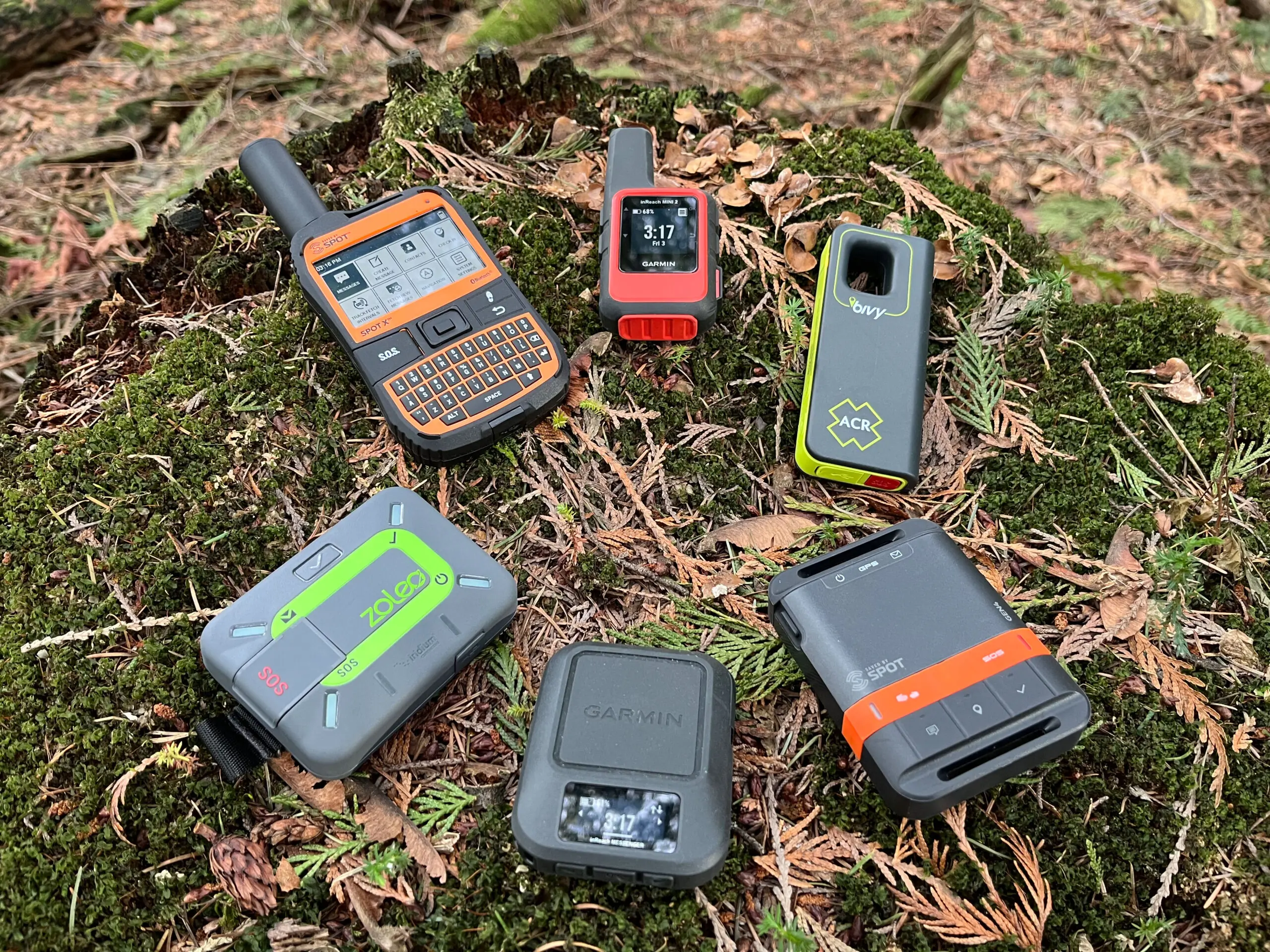
How We Tested the Best Satellite Messengers
We’d be lying if we said we’ve never gotten ourselves lost. Thankfully, the crew at GearJunkie is a savvy bunch, and our trials and tribulations have led us to be big proponents of carrying along a satellite messaging device when headed out into the backcountry.
- Field testing: Our field testing is the most important aspect of evaluating these satellite messengers, and it’s the primary consideration we draw insight from when rating and recommending them. We don’t just hike either — we’ve carried these devices across mountain ranges, while whitewater packrafting, and generally hanging it out there on the line in the backcountry.
- Message send and receive challenge: I tested devices side by side, timing send and receive times, as well as the connection speed to satellites. I also sought out difficult terrain to challenge reception by attempting to send messages from deep canyons and beneath dense tree cover. When feasible, I also test these devices’ SOS emergency messaging capabilities by scheduling device tests with the service providers.
- Battery, size, and weight measurements: Charge and discharge rates are also measured in-house, and I even toss these devices on our own scales to ensure the manufacturer’s claims about weight and size are accurate.
- Our satellite messenger rating system:
- Messaging Ability: 30% weighted. Is the satellite system used robust? Does the device connect to service quickly to send messages? Does it receive them reliably? Is there an associated app to draft messages on?
- Feature Set: 30% weighted. Does the messenger sport any added functions beyond messaging? Is the SOS button protected? Does it display weather forecasts or other information?
- Battery Life: 20% weighted. To score well here, I look for a decent battery life in both static and active messaging modes. Does the battery recharge quickly? Can the device be used to charge other electronics?
- Durability: 20% weighted. Does the device hold up to backcountry use? Do any screens scratch easily? Are all buttons still easy to press?
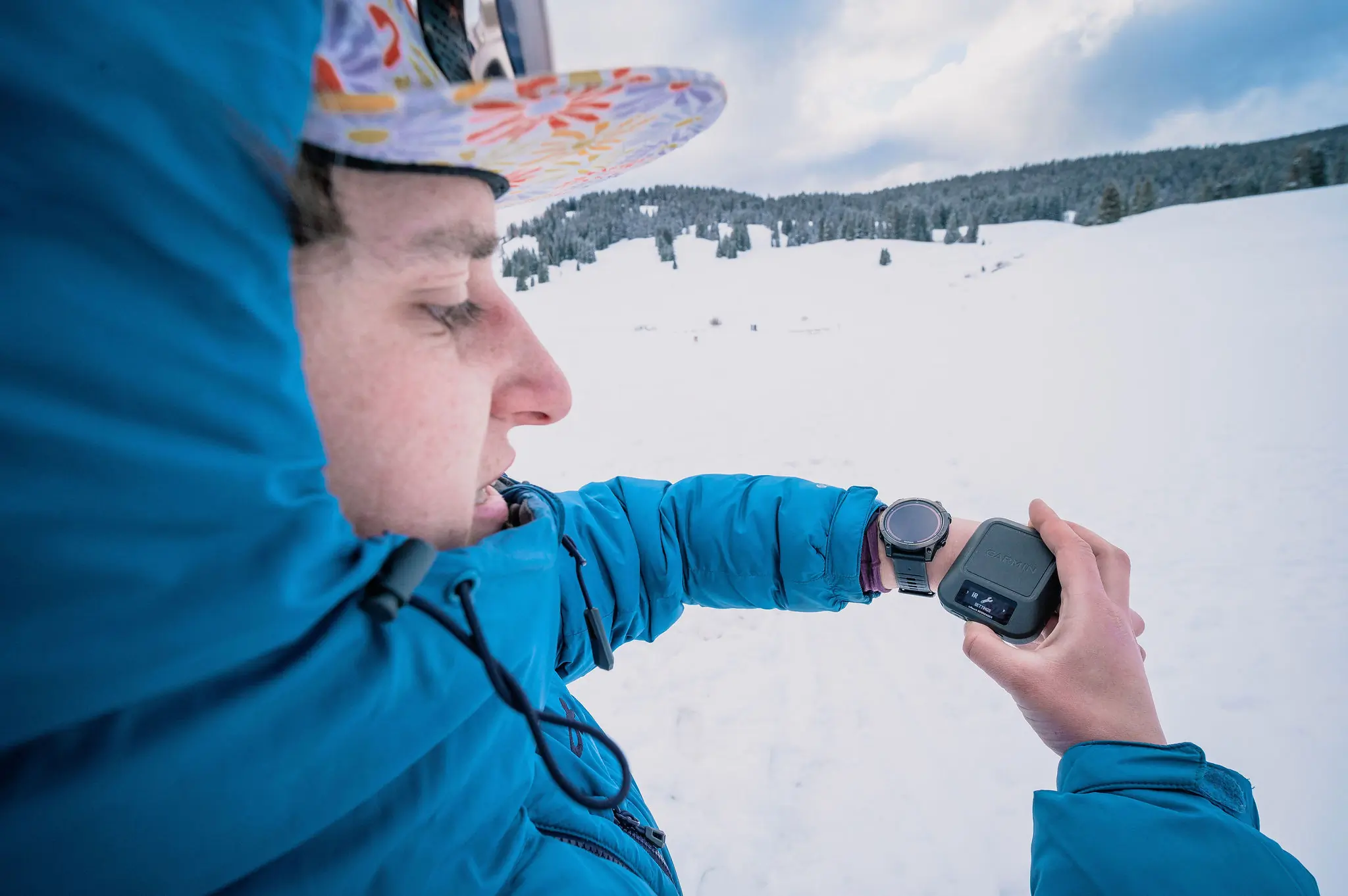



Our Testing Experts and Testing Locations
I, Senior Editor Nick Belcaster, contributed heavily to this guide, leveraging my experience as a wilderness guide in the North Cascades of Washington State and extensive time spent clacking out “I’m OK” messages from the backcountry. I have utilized satellite messengers to get updates on closing-in wildfires, arrange for supply drops, and assist in extracting injured clients.
Assisting myself is a team of AMGA mountain guides, ice climbers, trail runners, and many other GearJunkie athletes who use sat messengers daily to keep in contact from afar. Tim Newcomb is a veteran gear tester who also calls the Pacific Northwest home, and assisted heavily in getting out with these devices in order to test real-world messaging capabilities.
All devices detailed in our selection were tested over multiple months by multiple gear experts and in varying conditions throughout the Pacific Northwest and Southwest. Whether hiking, biking, climbing, ski-touring, or simply putting the devices through their paces, the satellite messengers underwent a mixture of experiences to test them in real-life use cases.
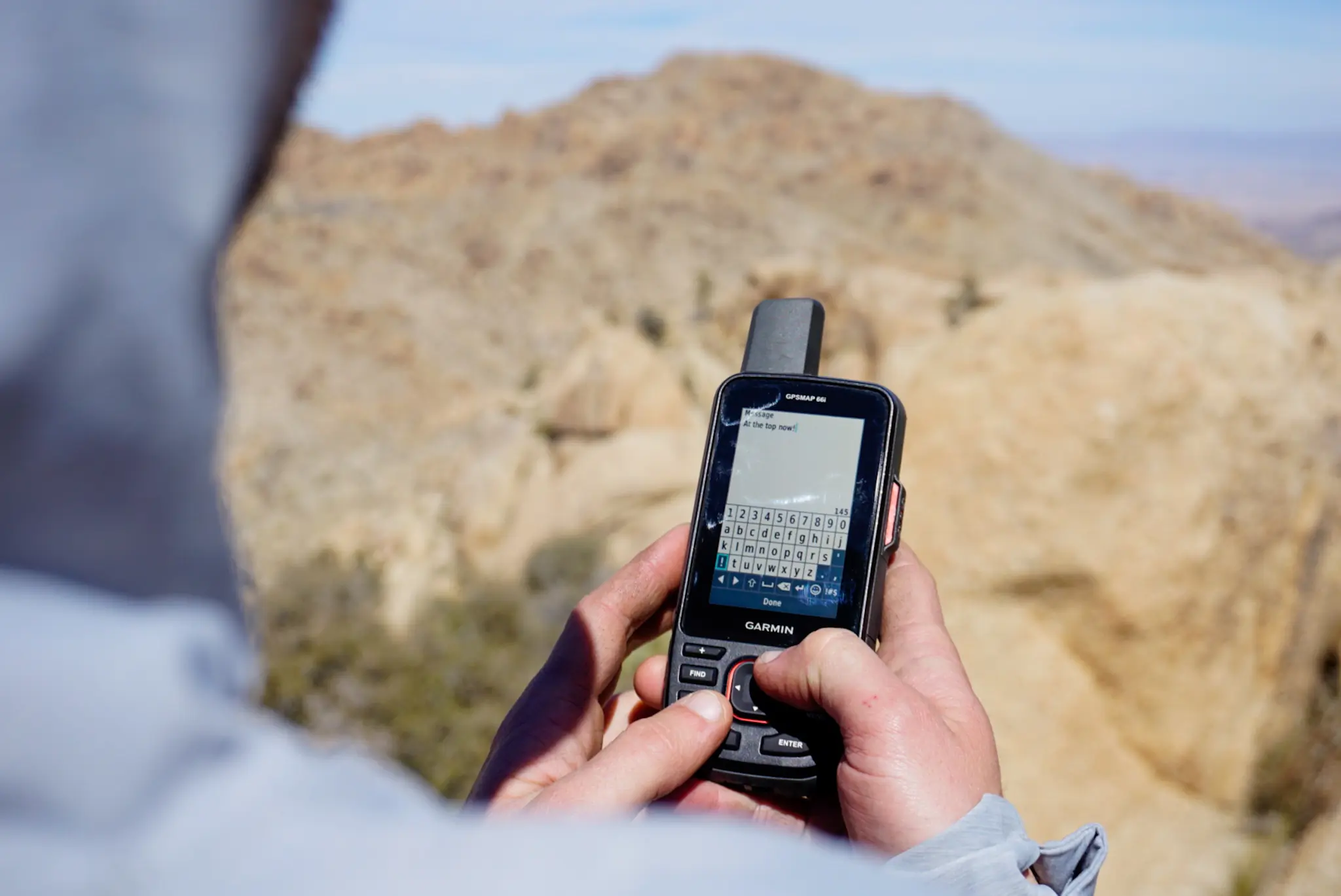



Buyer’s Guide: How to Choose a Satellite Messenger
Every satellite messenger has a mixture of different functions and designs. Users may find that some fit their expected adventures better than others, so it isn’t always a one-size-fits-all approach to selecting the best satellite messenger.
Before you dive into a satellite messenger, carefully review its features and functionality to determine what you think you’ll need for how you expect to use the device. You also should keep in mind that the cost of ownership of a satellite messenger is more than the initial purchase price.
While you can get a device for as little as $150 and spend up to $400, each one requires a subscription service to allow it to connect to satellites for communication, even emergency communication.
Once you’ve narrowed down your top satellite messenger selections, I suggest looking over the company’s subscription plans to see what’s included in the differing options. Features you may find essential may come at a steeper per-month price than you want to pay.
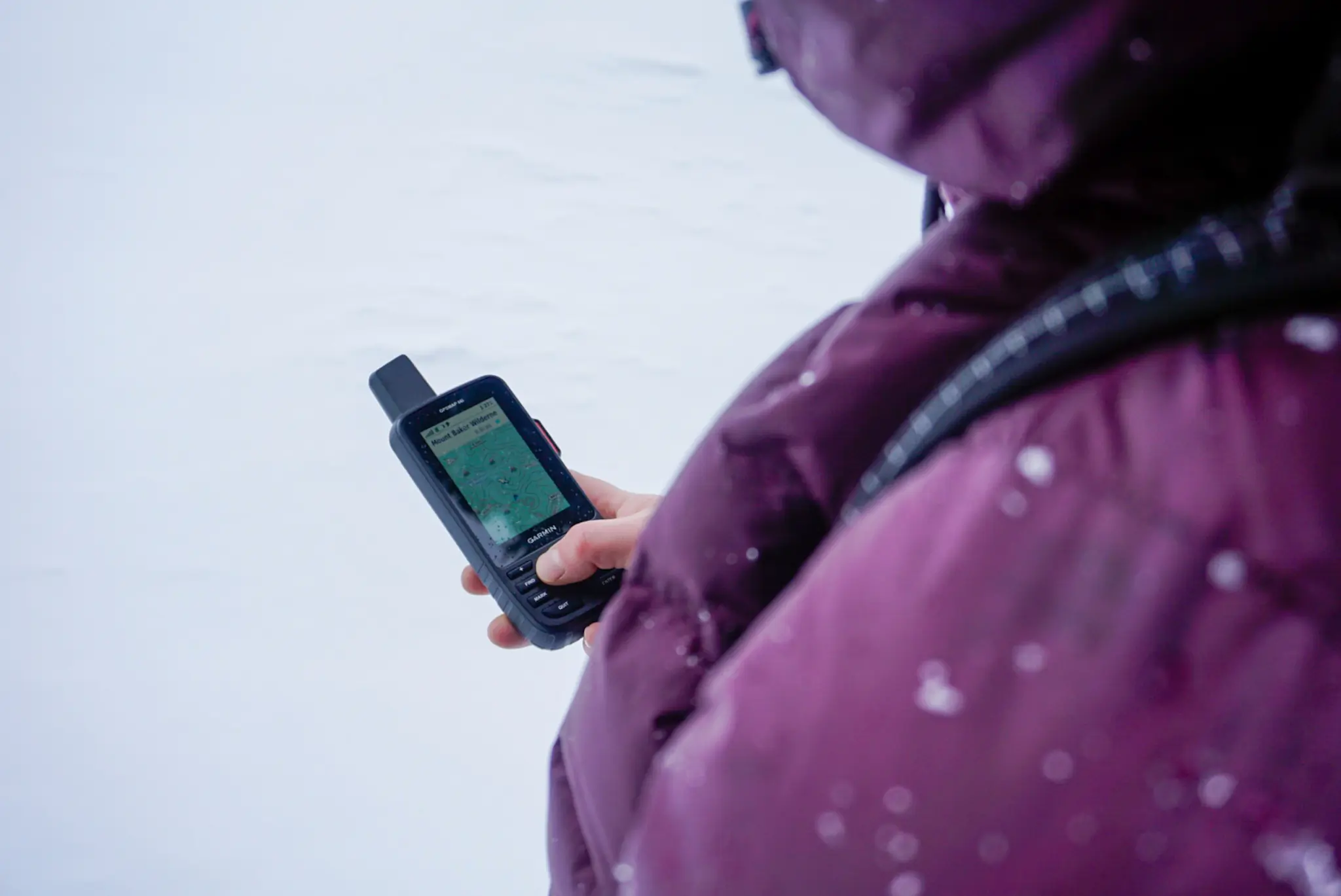



Emergency Support and Messaging
Know that a satellite messenger’s main goal is to provide emergency support when needed — every messenger comes with an on-device SOS button, but they also can help keep you connected to friends and family in non-emergency situations when cellular coverage is not possible.
You likely won’t use your satellite messenger as you would a smartphone — and if you don’t expect to, you can select something such as the ZOLEO or SPOT Gen4 — but understanding the capabilities of your device can help with expectations. For example, messages sent via satellite may well take up to 20 minutes to send, even in ideal situations with the best on-device communicators, the Garmin inReach Mini 2 and SPOT X.
Deciding which device to go with will depend upon your needs, as well as how often you plan to use it. Below, I dive into the three main types of satellite messengers: SOS beacons, app-assisted communicators, and all-in-one devices.
Differing Styles
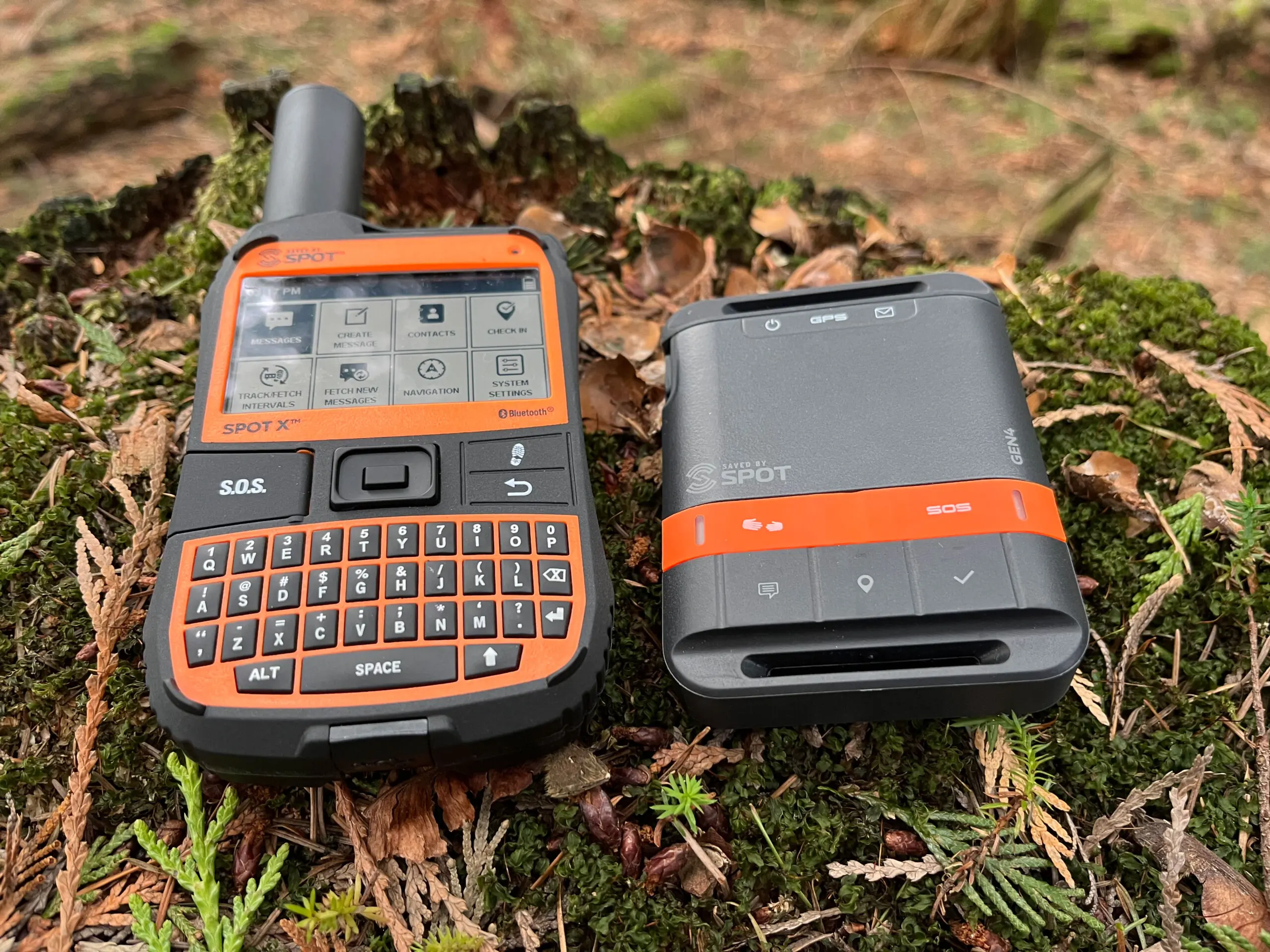



There are three main styles of satellite messenger, although overlap does exist. The most basic offers a simple SOS function and pre-set messages, all sent from the device without tethering to a phone, such as the SPOT Gen4. These devices are best thought of as a ‘set it and forget it’ option, and you’ll be limited to sending messages that you’ve pre-written at home.
It’s important to note that communication is one-way, which makes these devices most similar to personal locator beacons (PLBs) — which combine a satellite SOS function with a 406 MHz tone for rescuers to hone in on.
The next type offers these same functions but then includes an app — think ZOLEO, Motorola Defy, and Bivy Stick — that connects via Bluetooth to a smartphone for additional two-way messaging and functionality. This is a great step up in terms of functionality, in our opinion, and being able to craft custom messages has often gotten us out of a jam when outdoors, like changing itineraries or rendezvous points.
The third style includes the aforementioned features, but then also offers on-device functionality, from message composition to weather forecasting, as seen in the Garmin inReach Messenger, Garmin inReach Mini 2, and SPOT X.
These messengers are best for folks who want it all, or want the ability to leave their phone at home. Because they operate independently of a separate device, these messengers also have the most built-in safety of the bunch.
What About Satellite-Enabled Cell Phones?
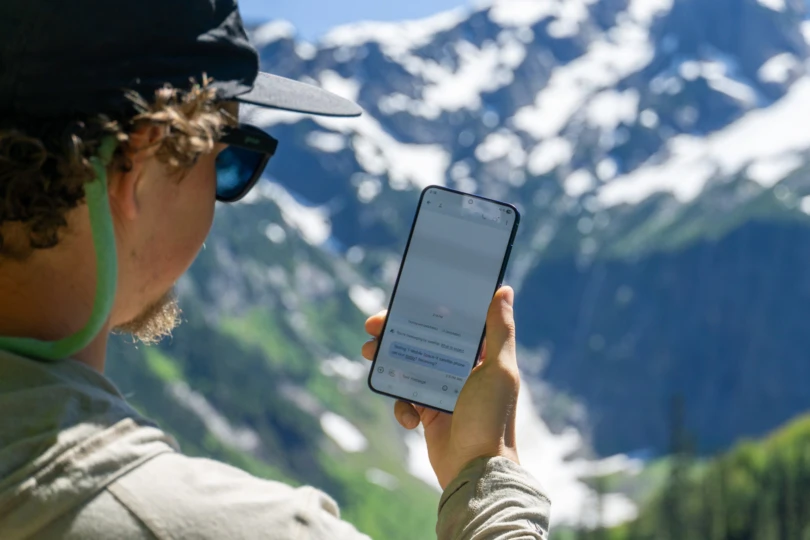



Apple iPhone
For a few years now, Apple has offered a satellite-assisted SOS functionality on iPhones, and recently unlocked the functionality further to allow for messaging abilities. These messages are limited in similar ways to the types of messages you can send on most satellite messengers (no images or video), and other than taking a little longer to send, the functionality is similar to texting on the device. I expect voice connectivity will come sometime later this year.
Apple uses Globalstar satellites to support its service, and we expect the same far-latitude limitations that the satellite installation has currently. That still covers a large swath of the populated world, however. The service is free for now, but it isn’t clear if it will always be that way (Apple previously offered its SOS functionality for free for two years, then extended it another year).
Starlink and T-Mobile
In early 2025, T-Mobile unlocked a beta version of its T-Satellite service, a Starlink-powered satellite connection that would integrate messages in much the same way the iPhone is offered — an endeavor that’s been a few years in the making. Initially, text messaging was the only option, but a suite of satellite-optimized apps has now been approved for use, including AllTrails, WhatsApp, and Google Maps.
Starlink has already made a compact version of its satellite receiver for mobile use, and the service is well-proven at this point. We’re interested to see how quickly other service providers jump onto the satellite bandwagon. It may only be a few years until most people have satellite connectivity in their pockets.
Satellite Messenger Networks
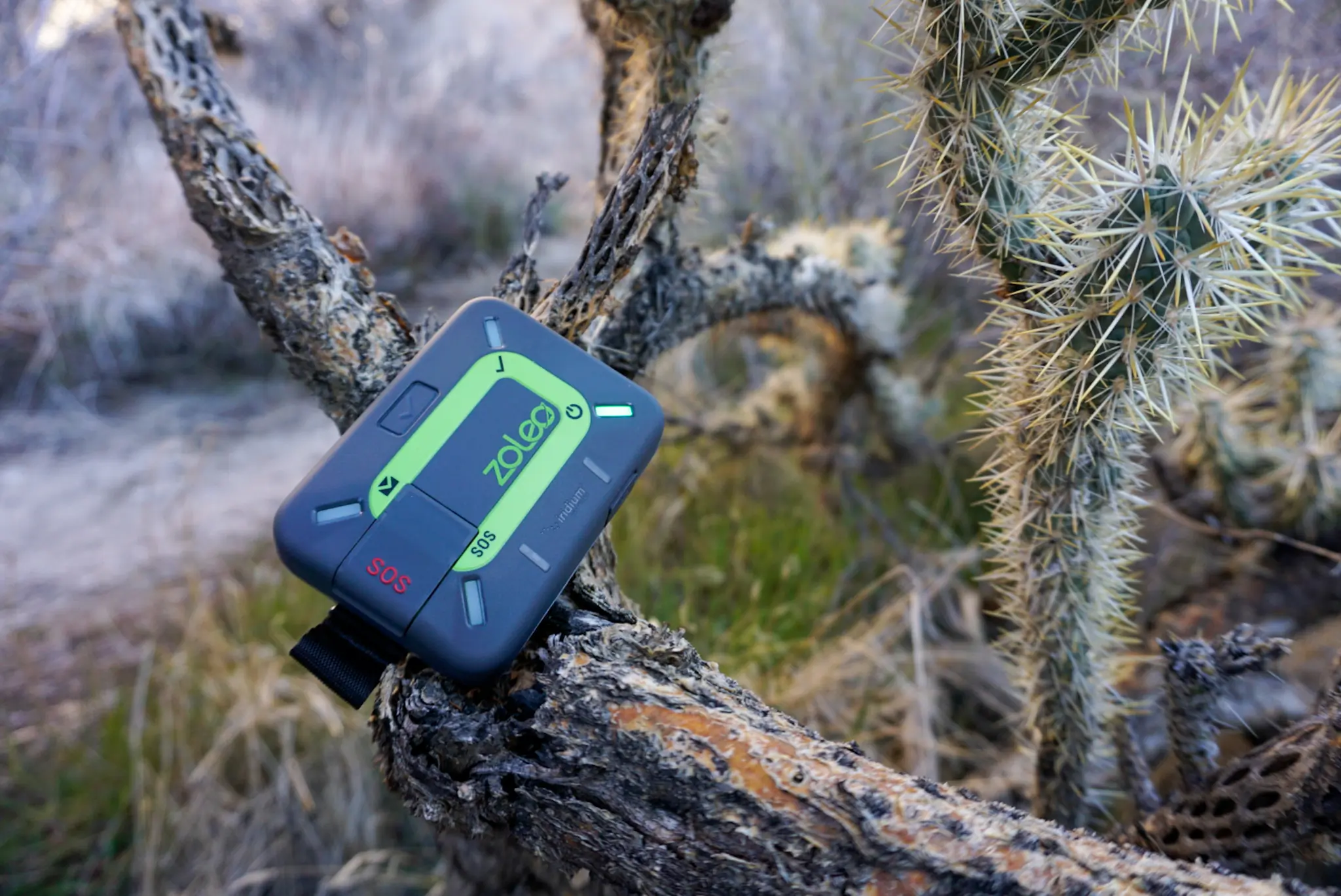



First, it’s important to make a distinction between the two types of satellite systems that a satellite messenger will depend on. Global Navigation Satellite Systems, or GNSS, are satellite networks that provide location and speed information to devices like handheld GPS units. The most well-known of these is the GPS system, which is managed by the U.S. government, though other international systems exist.
Satellite messaging systems, like Iridium and Globalstar, provide communications information between the transmitter and receiver, and both services feature low earth orbit satellites covering much of the Earth. In fact, the polar orbit of Iridium satellites allows it to cover even the poles, while Globalstar has points on Earth it doesn’t reach. Because of this, Iridium devices will be the best choice for those traveling to polar regions.
Other satellite networks, such as Inmarsat, orbit the planet in a geostationary pattern, with 15 satellites that are located along the equator. Because these satellites track the orbit of the Earth, they remain in the same place. This means that coverage is best between the 60-degree latitudes and that you may occasionally lose connection in deep valleys where your line of sight is obscured.
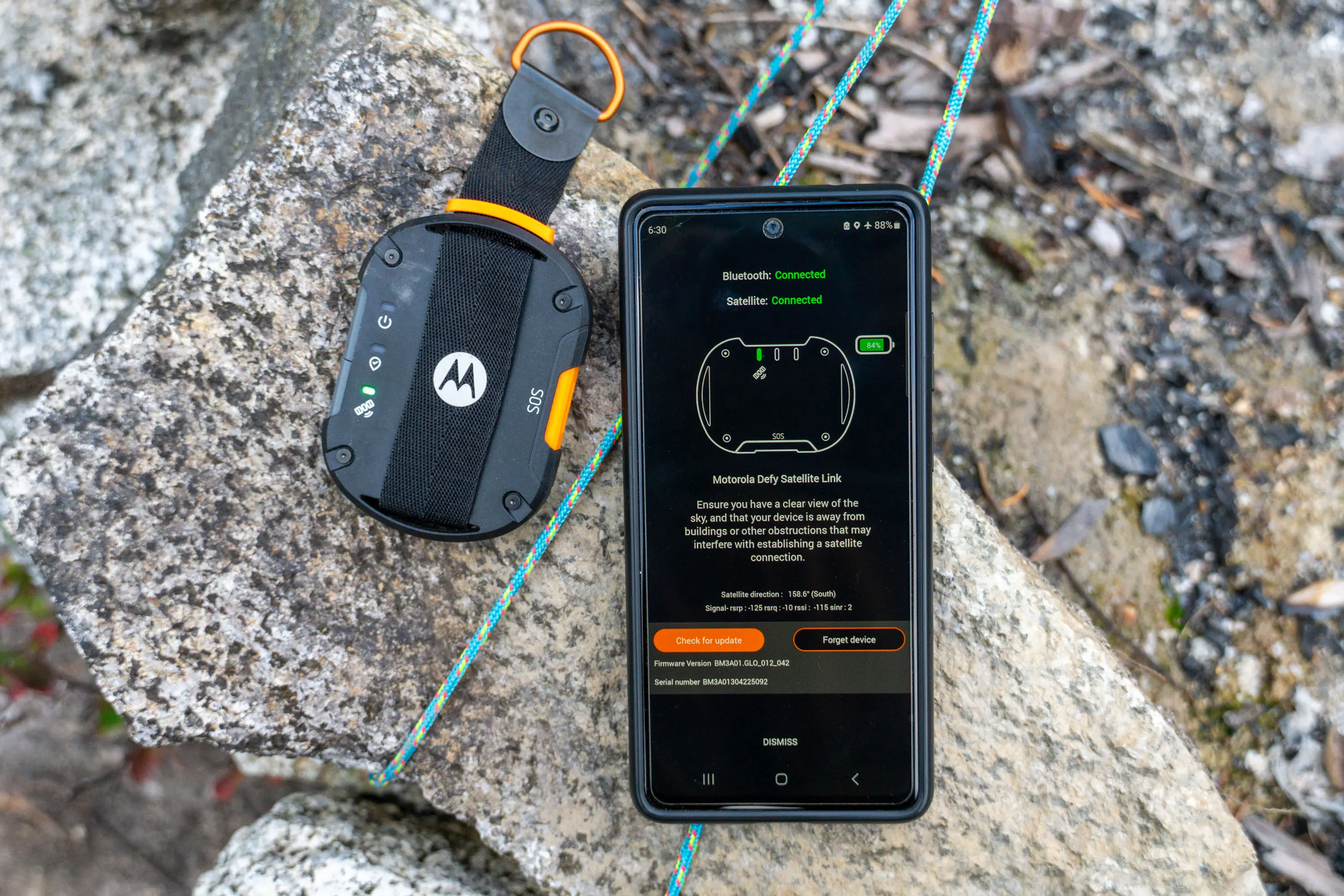



Iridium has more satellites (66) than Globalstar, but Globalstar sends them higher to provide additional coverage. Another key difference is Globalstar relays with Earth-based transmission stations, which can cause a greater delay in messaging than the satellite-to-satellite relays from Iridium. No matter which device you choose, check the coverage areas of its satellite provider to ensure it covers your planned adventures.
When you send a message, your device will queue it up for the next time that it is in contact with the satellite network. While these systems offer broad coverage, it may take a few minutes for a satellite to pass overhead and into view of the satellite messenger. Finding a clearing or promontory can greatly improve your reception.
Emergency Coordination
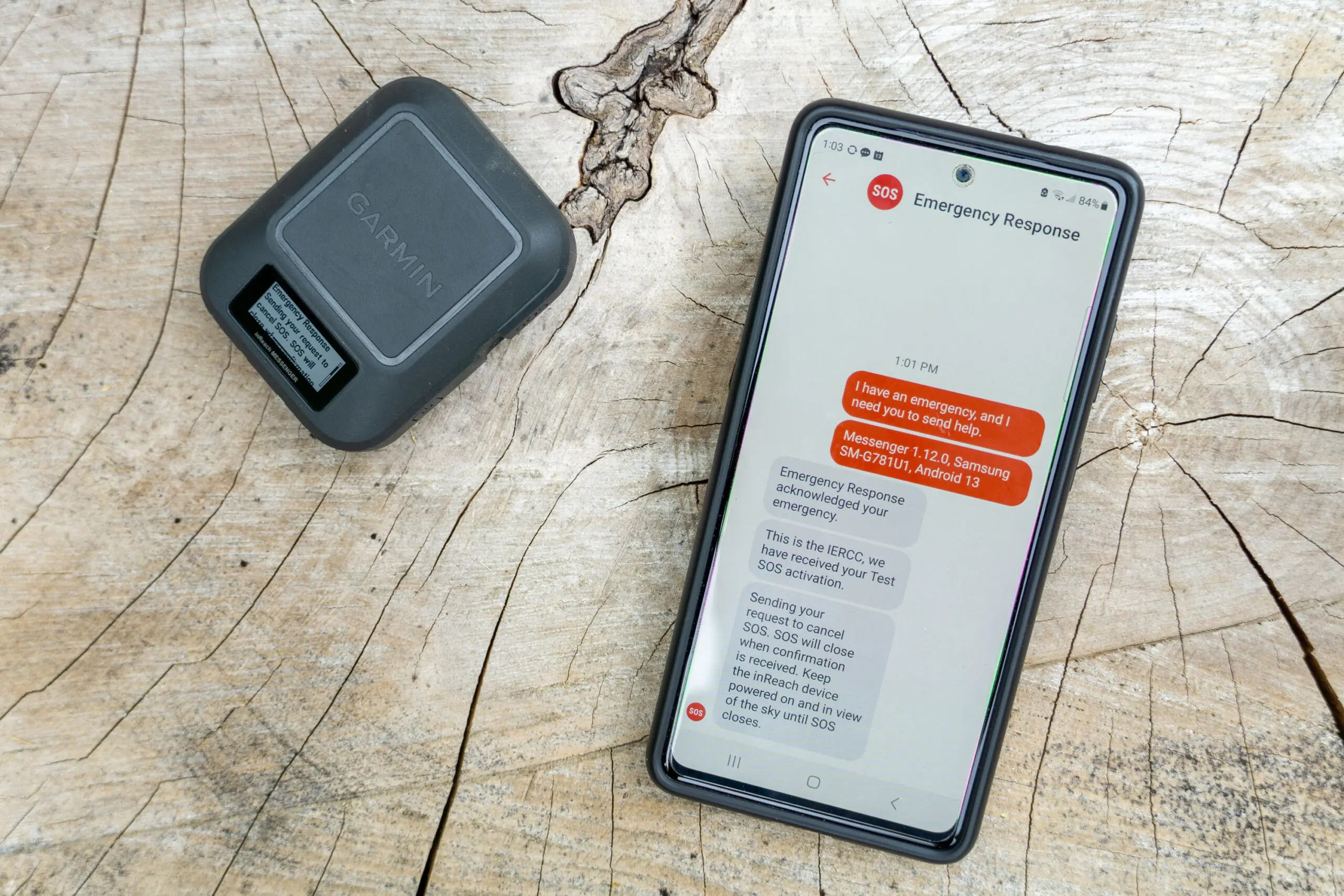



For obvious reasons, I didn’t live-fire test the response time of emergency responders. But every satellite messenger comes with an SOS button that summons emergency help. Each company contracts with a service provider to coordinate a response, and while we don’t have data from every one, we do know that those buttons do get pushed a good bit: Garmin recently fielded its 10,000th inReach SOS call.
Many satellite messengers also allow you to test their SOS service to ensure that it is operating as normal. On Garmin devices, you’ll need to schedule an SOS Assistance Test, which provides a time slot for you to test the service. On SPOT devices, you’ll need to enable the SOS Test Mode in your online account before attempting.
Once your message goes out, it’s relayed to an emergency coordination center. Garmin recently purchased GEOS, now owning one of the leading emergency operations. ZOLEO contracts with GEOS. ACR’s Bivy uses Global Rescue and SPOT contracts with FocusPoint International. All of these services are on the other end when you trigger an emergency call.
What Happens When You Trigger an SOS?
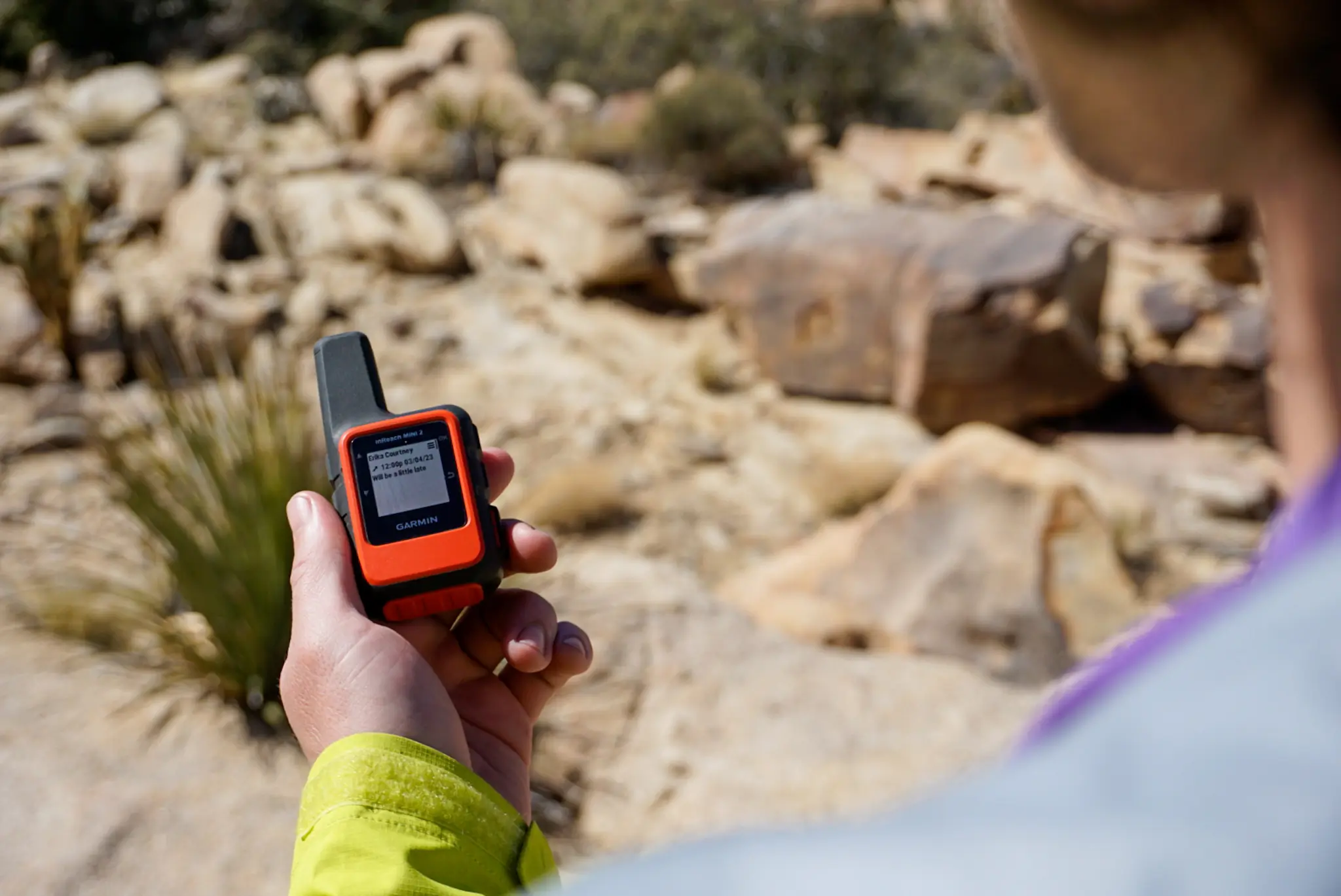



When you make the call to trigger an SOS, you’ll need to uncover and depress the SOS button to summon help. This will send a message to the emergency service provider that you have contracted with through your subscription. It’s important to know that without a current subscription, SOS service does not work.
On Garmin devices, these SOS messages are given a higher priority in the Iridium satellite system to ensure that they get to where they need to go. No matter the service, the functionality is similar, with the company working with local search and rescue teams to coordinate a response to your SOS call.
Some devices, like the Garmin inReach Messenger, SPOT X, and ZOLEO Satellite Messenger, allow you to send custom SOS messages to the emergency response service. This can be incredibly helpful when coordinating a rescue, and often an emergency coordinator will put you in contact with the local Search and Rescue (SAR) to better assist you. Response times can vary from a few hours to a few days, depending entirely on terrain, weather, and resources.
It’s important to note that some simpler devices, like the SPOT Gen4, will only display an LED light to confirm that an SOS message has been sent, and not necessarily received. This has caused some to panic during an emergency and opt to send multiple SOS messages — ultimately delaying their rescue.
Messaging, Weather Updates, and Tracking
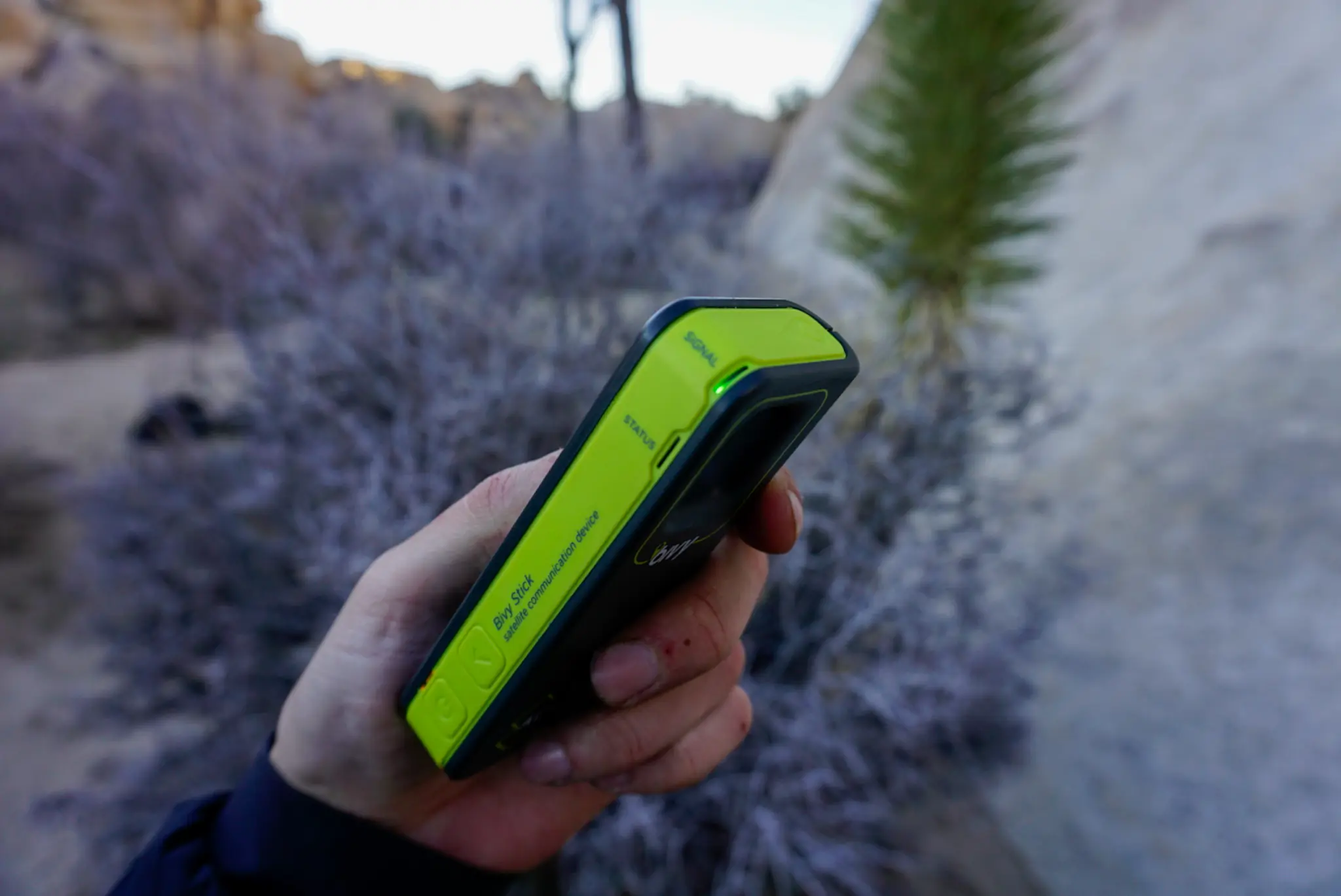



Thankfully, the majority of us will never need to hit that SOS button, instead relying on our satellite messengers to communicate with others, seek out weather updates, and track ourselves on excursions. Most devices offer two-way messaging, with the exception of the SPOT Gen4, meaning you’ll be able to both create and receive messages from abroad.
A 160-character limit is typical of most SMS and email messages sent from satellite messengers, with slight variation from provider to provider. These messages can also be appended with your GPS location, giving those on the outside some peace of mind knowing where you are.
Types of Messages
Messages fall into one of two categories: Preset, Predefined, or Check-In messages, and Custom messages. Messages in the Preset category are those that are arranged before setting out on our trip, and typically relay messages such as “I’m Okay,” “I’m Starting My Trip Here,” or “I Made It to Camp.” These messages are very often unlimited and don’t count against your subscription allotments.
Custom messages are those that are created on the fly, and can either be produced on-device or through an accompanying app. These messages are not limited to who they can be sent to, but they will count against your subscription if you have a messaging limit. Don’t fear if you go over, however, all providers will spot you extra messages, at a typical 25-50-cent rate per message.
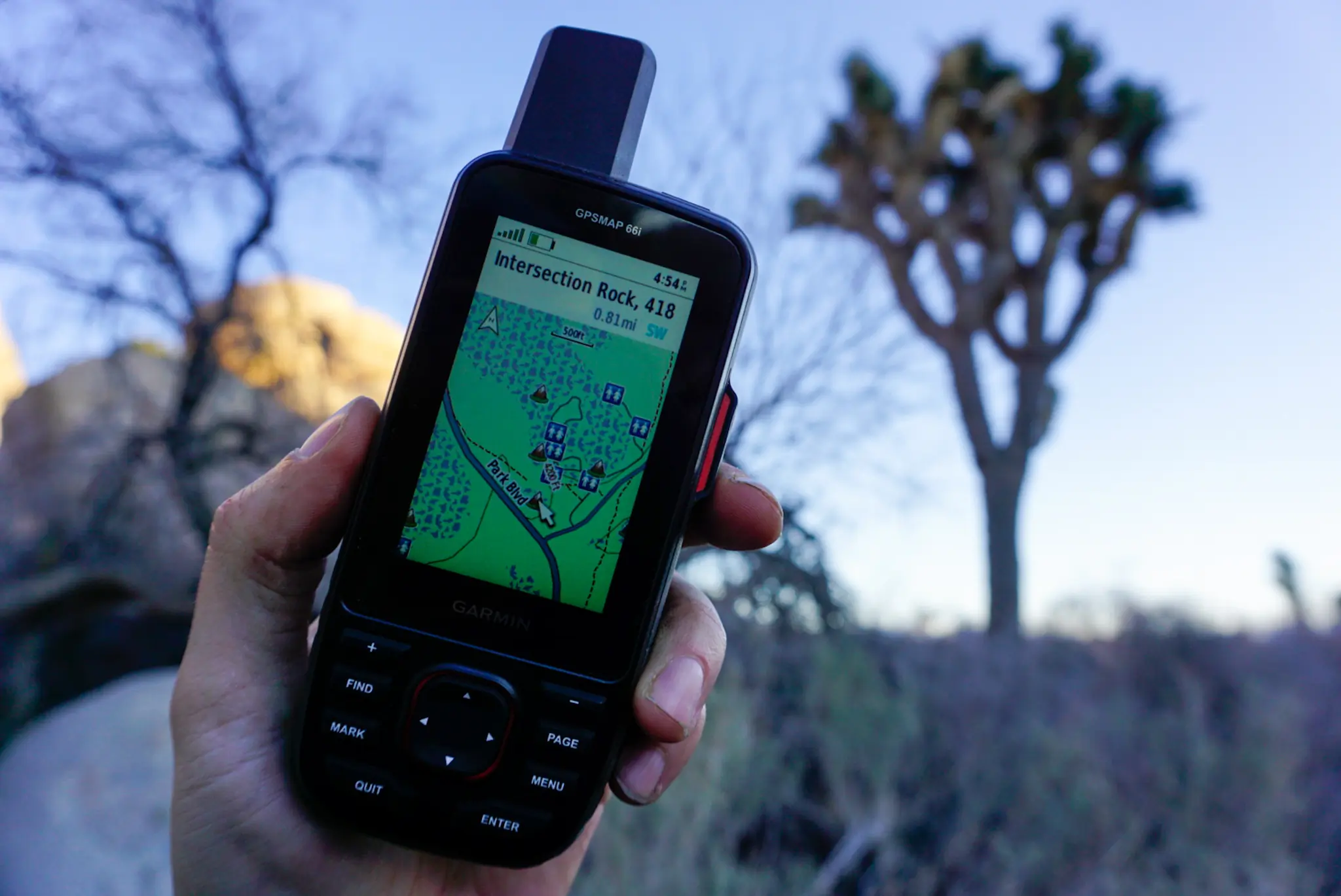



Weather Forecasts
Certain satellite messengers, like the Garmin and ZOLEO devices, also utilize their satellite connections to deliver weather forecasts directly to your messenger. These forecasts will display the high/low temperature, conditions, wind speed and direction, and precipitation chance of either the location you are currently in or a location of your choosing.
Garmin devices also offer an extended forecasting option (at $1 per), which bumps out the forecast window from 4 to 8 days, and offers a finer interval of forecast reporting. There is also the option to request a marine forecast, which includes information on wave height, currents, and visibility.
Tracking
Tracking your progress can be a handy tool for both yourself, as well as those following along at home. This tracking is most often broken down into different intervals, allowing you to adjust the frequency at which a location is recorded. SPOT devices provide tracking at all levels of subscription, whereas Garmin offers it unlimited at the mid-tier subscription rate, and ZOLEO offers it as a ‘Location Share+’ add-on for $6 /month extra.
When it comes to the pay-to-track crowd, we will note that the Bivy Stick is a particularly poor deal when it comes to tracking: A monthly basic plan allows 20 credits, which are shared between messages and tracking, and can quickly be chewed up at one credit per 30 minutes at the 5-minute tracking interval. You can pare down your tracking interval to once every hour, but functionally, I find this to be too coarse for accurate tracking.
Applications
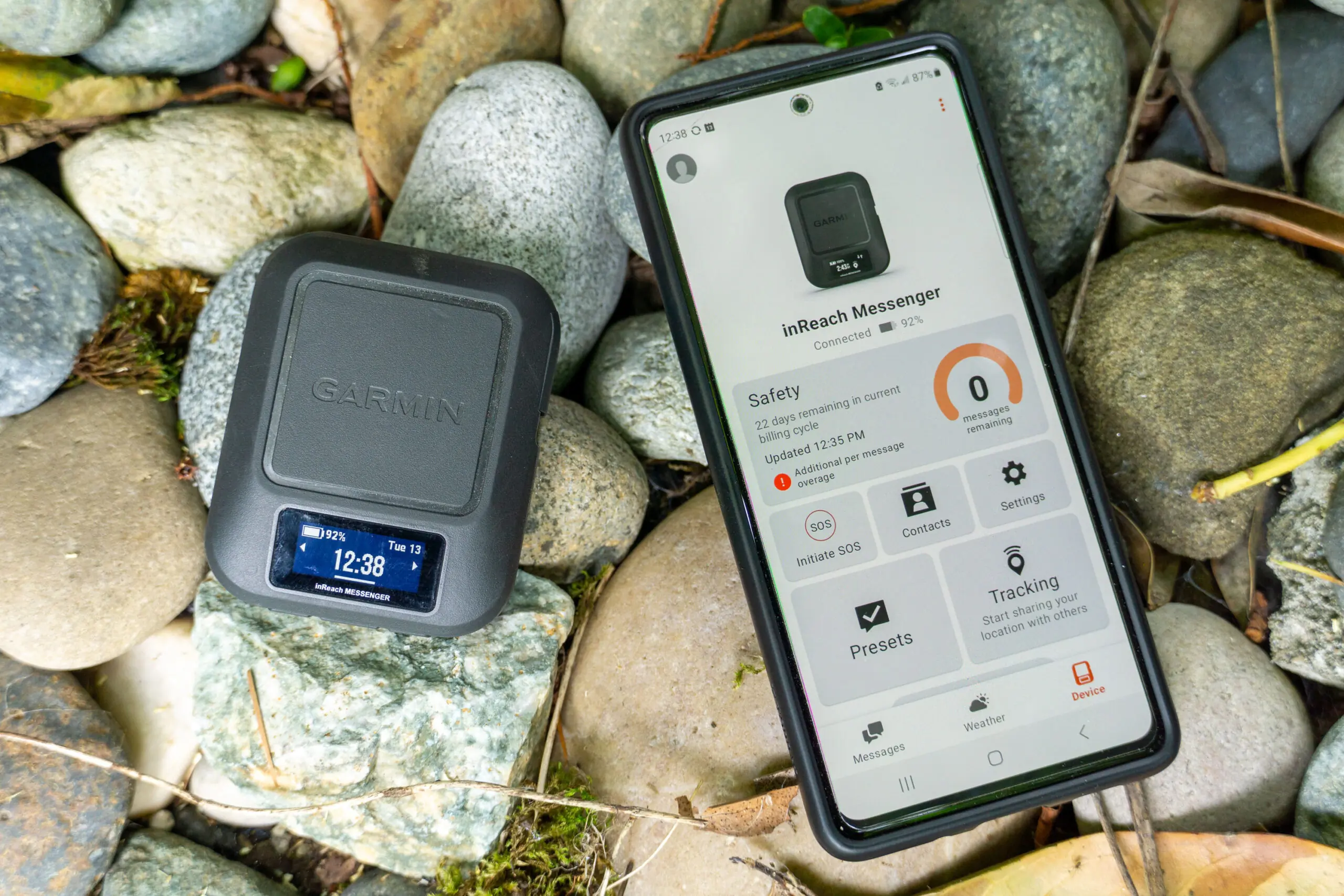



I can’t go too far without needing an app for that these days, and it’s the same in the world of satellite messengers. A few of the key devices tested, such as the ZOLEO and Bivy, require you to connect via Bluetooth to your smartphone to use the app for custom messaging, and most of the functionality (really, anything other than the SOS or “OK” message).
Garmin, while allowing for on-device messaging on both the inReach Messenger and inReach Mini 2, has a strong app that makes messaging much simpler than on the device. We’ll note that even some Garmin smartwatches integrate with the devices for easy wrist-triggered SOS messages.
The SPOT X doesn’t rely as much on an app, but it is there for additional functions. And it works just swell. The SPOT Gen4 is the only device we tested that doesn’t tie into an app for its in-field functionality.
The Functionality You Need
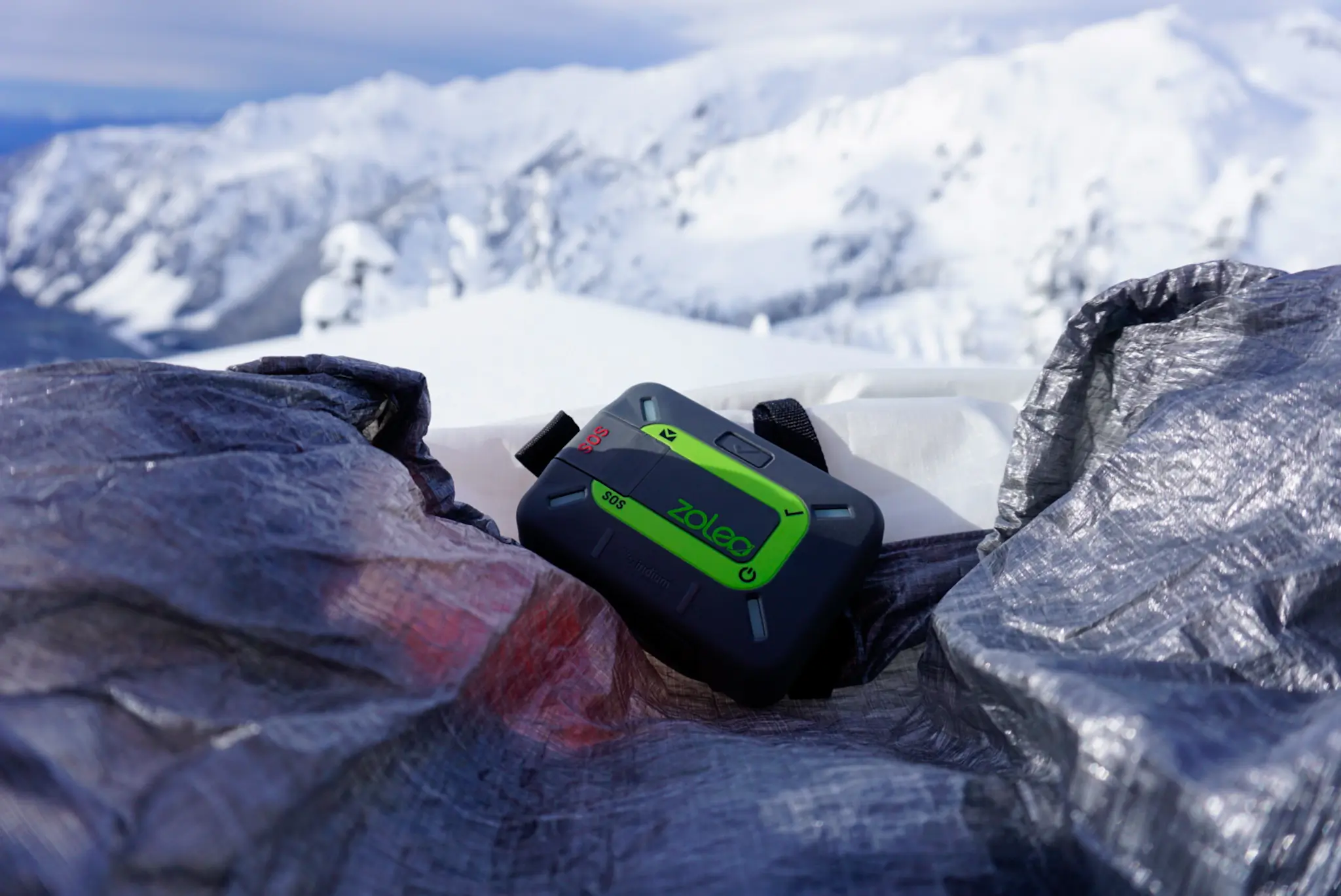



What you need out of a satellite messenger depends on the adventures you’ll go on. Are you a one-day or weekend trip adventurer who is generally in cellular coverage, but wants access to the SOS function for those emergency situations when cellular coverage might not be available? If so, going basic may be enough.
Are you planning multiday trips out of cellular coverage and want to not only have emergency functions, but also messaging capabilities? That will require a device that can handle your plans. Understand what type of adventurer you are and select a messenger — and service plan — to fit those needs.
Satellite Messenger Subscription Plans
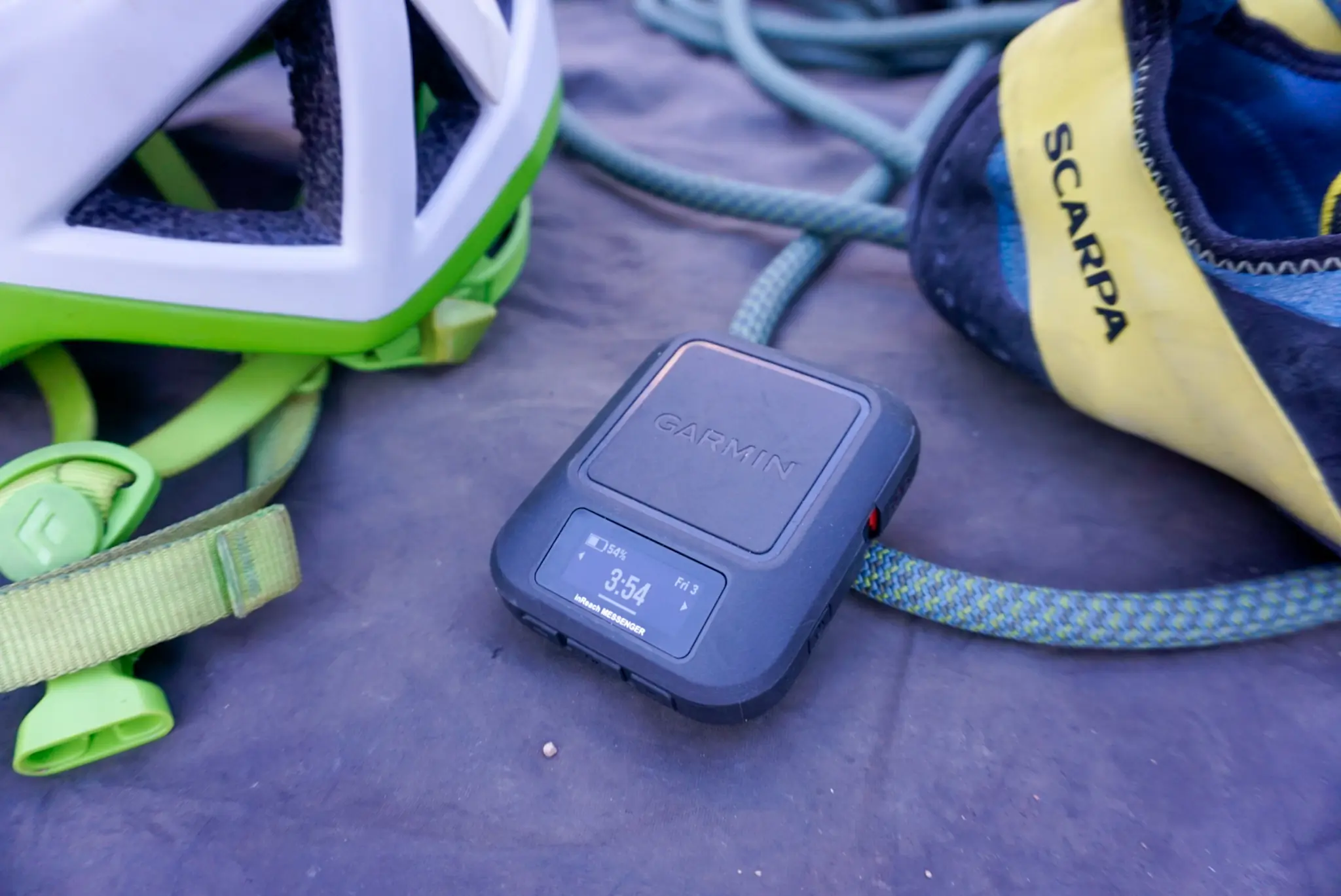



Editor’s Note: Subscription plan information is accurate as of November 2025.
Beyond your one-time purchase price, you’ll also need to select a subscription service to render the device useful. Typically offered as monthly plans, you can select how many messages you can use, how much tracking you can do, and so forth. Carefully look through service plan options before you buy so you don’t get stuck with a device you don’t want to pay to stay active.
Garmin inReach Plans
The Garmin plans offer great flexibility in pricing (as low as $15 and as high as $55 per month), which also impacts what you get. Recently updated in late 2024, the plans are broken up into two tiers: Consumer and Professional, and now move away from Freedom and Annual plans, and instead, there are three levels of service: Essential, Standard, and Premium.
The most basic Essential consumer plans allow for 50 text messages, tracking intervals of every 10 minutes, and an activation fee of $40 with overage charges for additional text messages, weather services, and location requests. The $50 Premium monthly plan offers tracking every 2 minutes and unlimited tracking points, text messages, location requests, and more.
All plans as of 2026 now support some number of photo and voice messages (between 10 and 50 a month), but you’ll need the inReach Messenger Plus to use the service.
ZOLEO Plans
ZOLEO ranges from $20 to $35 to $50 per month and steps from 25 messages to 250 to unlimited along the plan choices. You can add $6 per month for location shares and get unlimited check-in messages. Overages for each message is $0.50 for the first two plans. ZOLEO has recently raised its activation fee to $40.
SPOT Plans
The SPOT X plans range from $12 to $40 per month with six different plans. Expect to get anywhere from 20 custom messages to hundreds or even unlimited messages. The SPOT Gen4 features two plans, either $12 or $15 per month, depending on if you sign up for a year or go month-to-month. The nearly identical plans both come with unlimited check-in or help messages and basic tracking.
SPOT has a $30 activation fee for any subscription, and if you’re using their Flex plans (where you pay by the month and can elect to leave the device unactivated when you aren’t using it), you’ll also pay an annual ‘Flex Charge’ fee of $35. We’ve tallied the math, and if you’re going to use your SPOT device for more than 6 months of the year, you should purchase an annual contract plan.
ACR Plans
The Bivy Stick has four plans — all available at a discount for a yearly contract or more expensive for a month-to-month contract — ranging from $15 per month to $65. The basic plan includes 20 credits, which can be used as a message or tracking, with overages of $0.75 per credit.
Each step up includes additional credits and services until unlimited credits with group tracking. Bivy has no activation fee, instead differentiating the monthly price based on contract length.
Motorola Plans
Motorola Defy contracts with Bullitt Satellite for their subscription coverage, and while they used to be highly competitive as the cheapest satellite messenger service out there, they have raised their plan prices significantly in 2025.
You can pay either monthly or annually, but the monthly plan requires a 12-month contract, and you’ll be charged an early cancellation fee of the amount you still owe on your year. The $190 annual plan is the better of the two, and you’ll pay a $10 activation fee.
Size, Weight, and Batteries
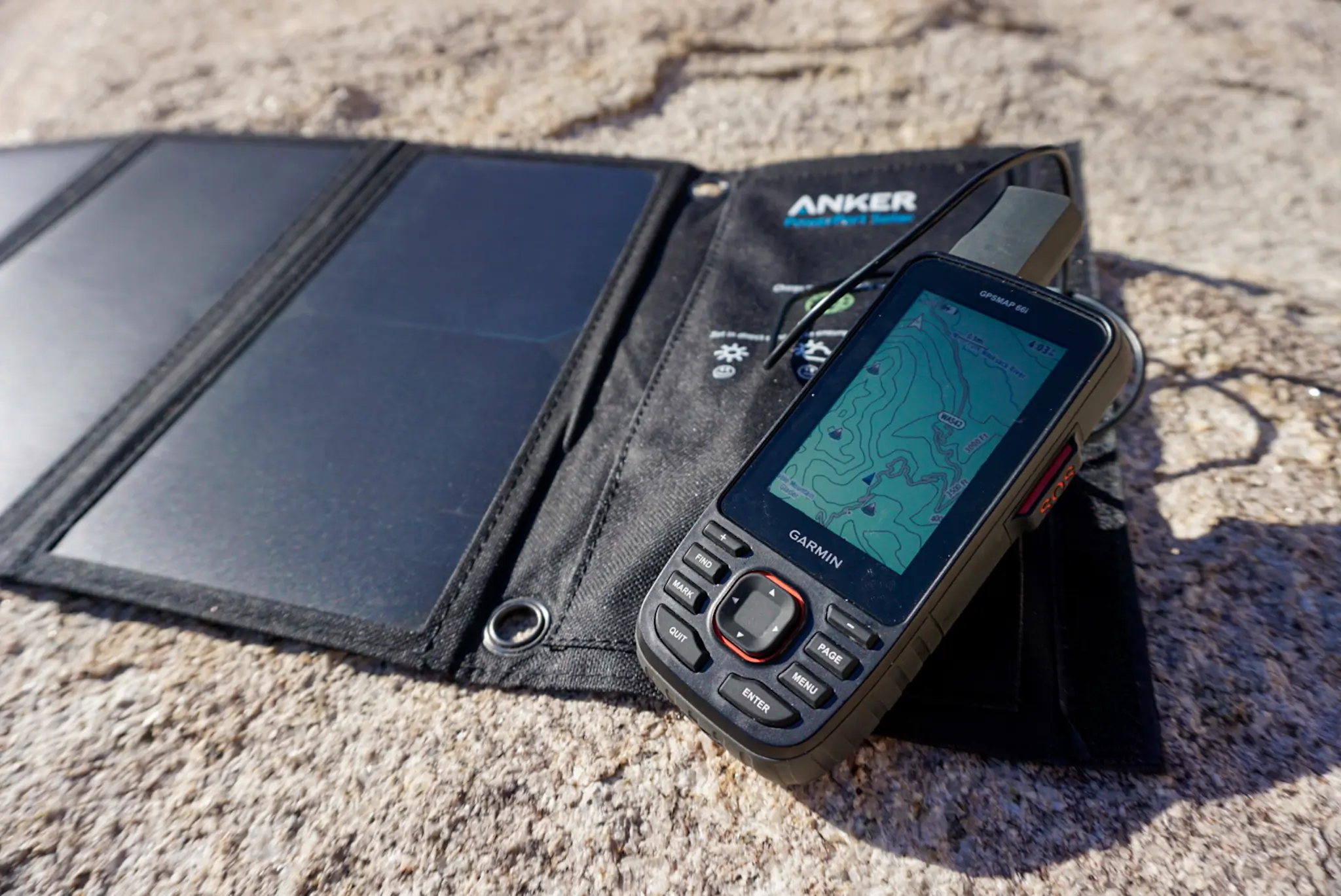



While most satellite messengers are compact, some do come lighter and smaller than others (here’s looking at you, inReach Mini 2 and Bivy Stick). And that may be great in certain situations. If you’re lugging tons of equipment with you, a few ounces or an inch or two in size may not matter, and you can embrace the SPOT X, but if you want something you can carry in your hand while you run or clip to a small pack while you bike, for example, these specifications will hold extra importance.
Another specification to watch is battery life, especially if you plan on long adventures or already have a set routine for charging devices (will micro-USB or USB-C require you to bring an extra cord?) while on an adventure. Most satellite messengers aim to provide extended battery life for long trips into the backcountry, but it’s important to remember that this battery life can be limited by the number of messages sent, tracking intervals, and active screen time.
Almost all sat messengers today, with the exception of the SPOT Gen4, sport an integrated rechargeable battery that can be juiced up in the field from a solar panel or power bank. Some, like the Garmin inReach Messenger, even offer reverse USB-C charging that can perk up your other electronics if needed.
Durability
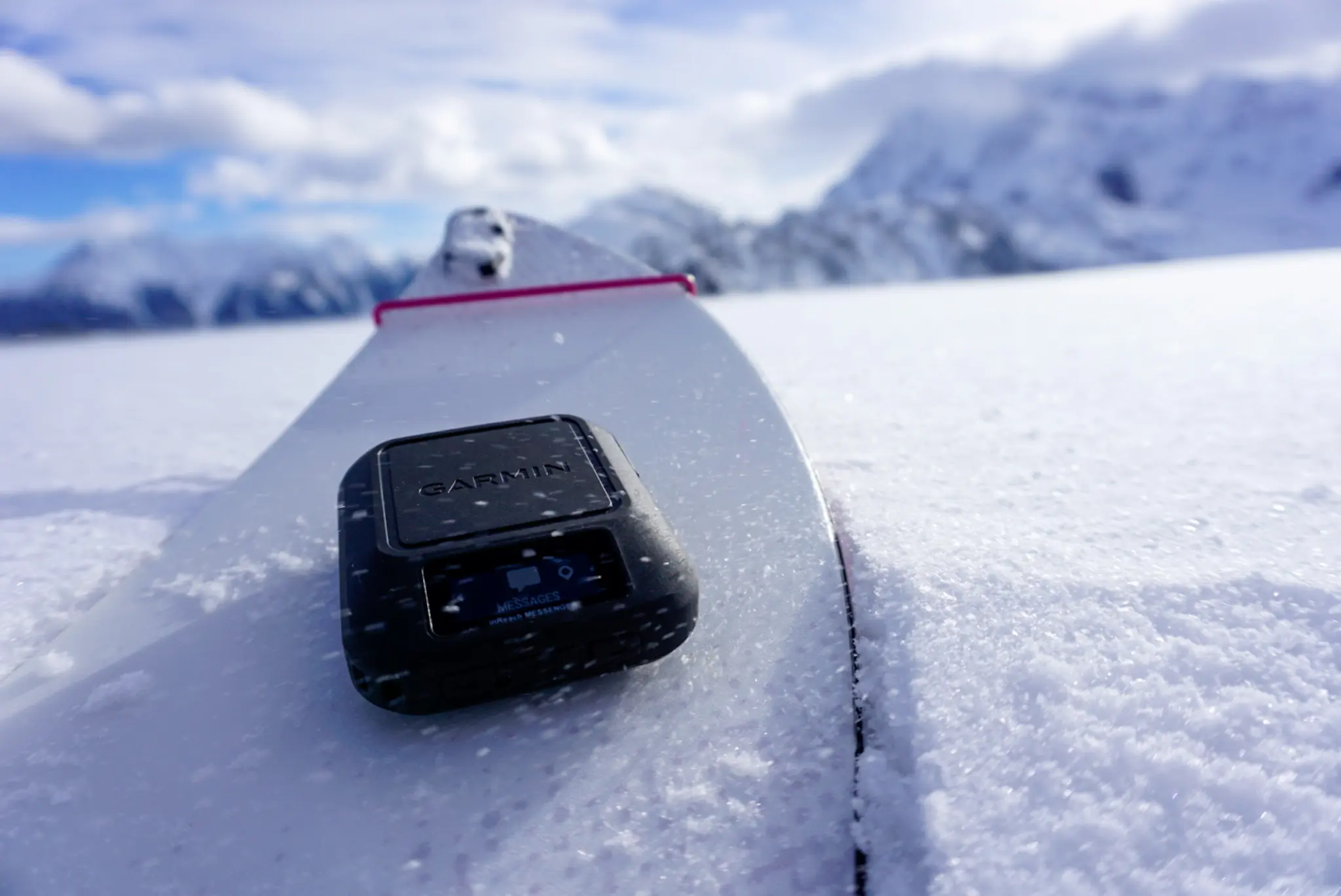



New brands need to start somewhere, but decide if you’re willing to start with them. The likes of Garmin and SPOT have led the satellite messenger categories for years, and have built in dependability in terms of quality of product. But that doesn’t mean that ACR or ZOLEO aren’t there yet.
All the messengers we tested, except for SPOT-branded devices, use the trusted Iridium satellite system for reliable coverage, so we don’t expect issues there.
Then there’s the durability of the device itself. Each device has undergone testing to earn an international IP number. Both the Garmin devices nor the Bivy Stick weren’t tested against dust and earned a 7 for water (an IPX7 rating represents this), which allows for water immersion protection up to three feet for 30 minutes.
The SPOT X earned an IP67, which offers complete dust protection with the same level of water protection.
The SPOT Gen4 and ZOLEO devices are rated at IP68, complete dust protection with water immersion protection for long periods of time under pressure, the most durable of the devices tested.
Understand how you plan to use your satellite messenger and then choose a device that fits your personal needs.
Price & Value
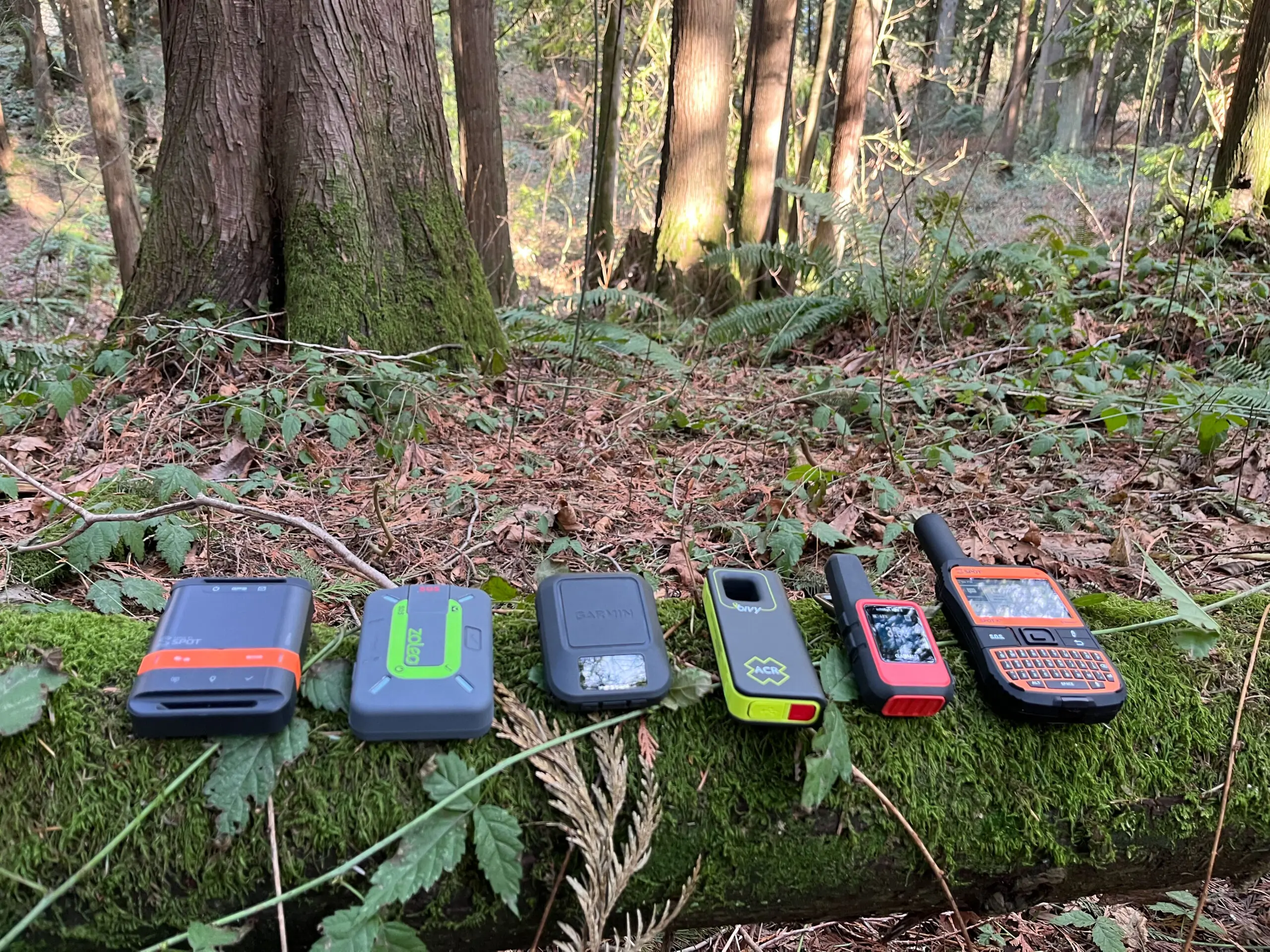



There’s a pretty broad range of satellite messenger prices out there, with budget-friendly devices asking $150 to all-in-one units $600 units that’ll be your GPS, messenger, and even flashlight. Because everyone has different aspirations outdoors (and needs), consider how you’ll be using your satellite messenger, how frequently, and if custom messaging is important for you. It’s one thing to send a quick ‘I’m OK!’ message on a backpacking trip, and another to coordinate a high-alpine rescue in Nepal.
Budget
The budget satellite messengers prioritize the essentials, with the emergency SOS function being the number one. These units often don’t host any type of on-device message composition and instead rely on pre-selected messages that you manage from home. You’ll also more often be locked into the Globalstar satellite network, which is cheaper to access, but not quite as good as the more prevalent Iridium system.
The ZOLEO Satellite Messenger is an outsized value at $1500, as it both uses Iridium birds, as well as hosts an app where you can clack out custom messages. The downside here is a slightly chunky profile, as well as a more limited battery life of 8 days. You also can’t message directly from the device, but so long as you’ve got your phone, you’re covered.
Mid-Tier
Bumping up to $300-400 devices gets you a good bit more, and this is where you think most outdoor folks are best served. For one, mid-tier devices all use the gold-standard Iridium network, which has truly global coverage and quick send-and-receive times. You also almost always get an on-device messaging ability, even if it is a little clunky.
An important factor in your choice should also include the price of the subscription, and while it’s gone up slightly recently, the $15 a month you’ll pay for the Garmin inReach Messenger ($300) or inReach Mini 2 ($400) is still a solid deal for the lowest tiered plan. These devices will also last significantly longer than budget ones, with a runtime of between 14 and 28 days.
Premium
Spending the big bucks will get you all the bells and whistles, and the $600 Garmin GPSMAP 67i is part GPS, part messenger, and for those who need a one-and-done unit, this is it. A full-color screen and predictive texting make clacking out a message easy, and the host of other features really bump up the value.
For the same price, you could also get into a new Apple iPhone or T-Mobile Phone, which now hosts satellite messaging. The Iridium GO! ($855) is certainly specialized, but for the money, you’re getting a satellite phone, messenger, and internet hotspot in one device.
Frequently Asked Questions
A satellite messenger, which requires a subscription service to operate, connects to a satellite system to send and receive messages. This process is different than the near-instantaneous response of a cellular or WiFi network. The device uses this satellite capability to keep you connected to others when cellular coverage is not available.
If you plan to adventure beyond cellular coverage, you may want to consider having an active subscription to a satellite messenger. The only reliable way to call for emergency services or let loved ones know you’re in a safe place is by relying on satellite messenger coverage.
It is hard to argue that Garmin doesn’t make the best satellite messengers, whether the inReach Messenger or the inReach Mini 2, but that doesn’t mean Garmin is the only manufacturer of quality satellite messengers.
We can recommend Garmin products based on our independent testing, but were also impressed with a mixture of additional satellite messengers from a variety of companies.
In short, potentially. You want to ensure that you have the SOS option on your satellite messenger — a standard feature in the industry — and the ability to send an “I’m OK” message when needed.
How much additional functionality you want to have on your device is up to you. Relying on tethering to your smartphone via Bluetooth requires that your phone doesn’t lose connectivity to your device and your phone stays charged and accessible. The more on-device message composition functionality, the less you need to rely on your smartphone and the device’s app to stay connected.
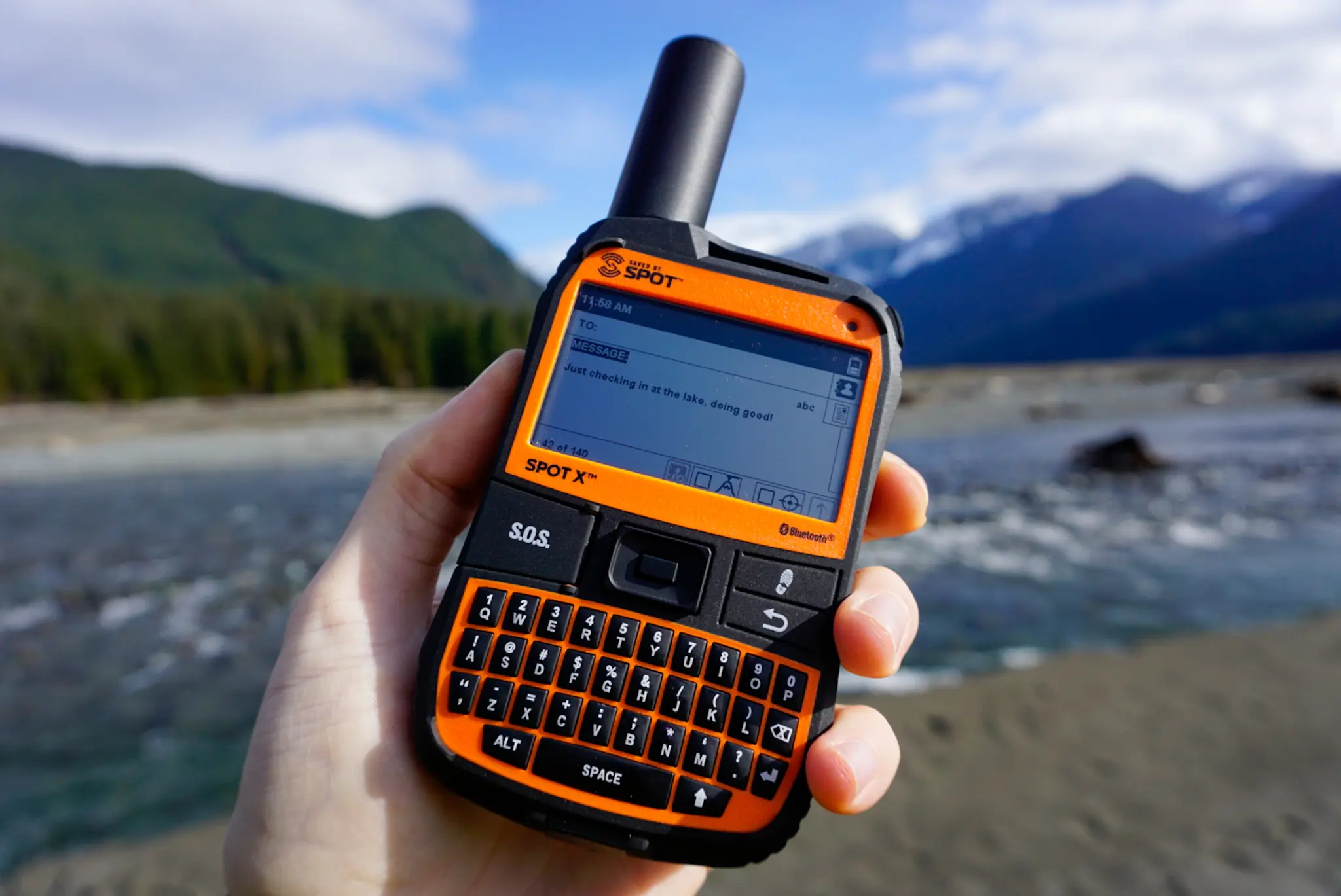



Be patient when it comes to satellite messages. It may take just a few minutes to send a message, especially with a clear sky and no tree coverage. But getting a connection to a satellite may be tough in some locations, and even the positioning of satellites or heavy cloud cover can alter the timeline of your message.
Keep in mind, there’s no guarantee you can get a signal to a satellite, so some cases may require a high level of patience or willingness to move in order to connect to the satellite.


The Best Handheld GPS of 2026
There’s no need to rely on your smartphone or smartwatch for navigation. We rounded up the best handheld GPS devices for finding your way.
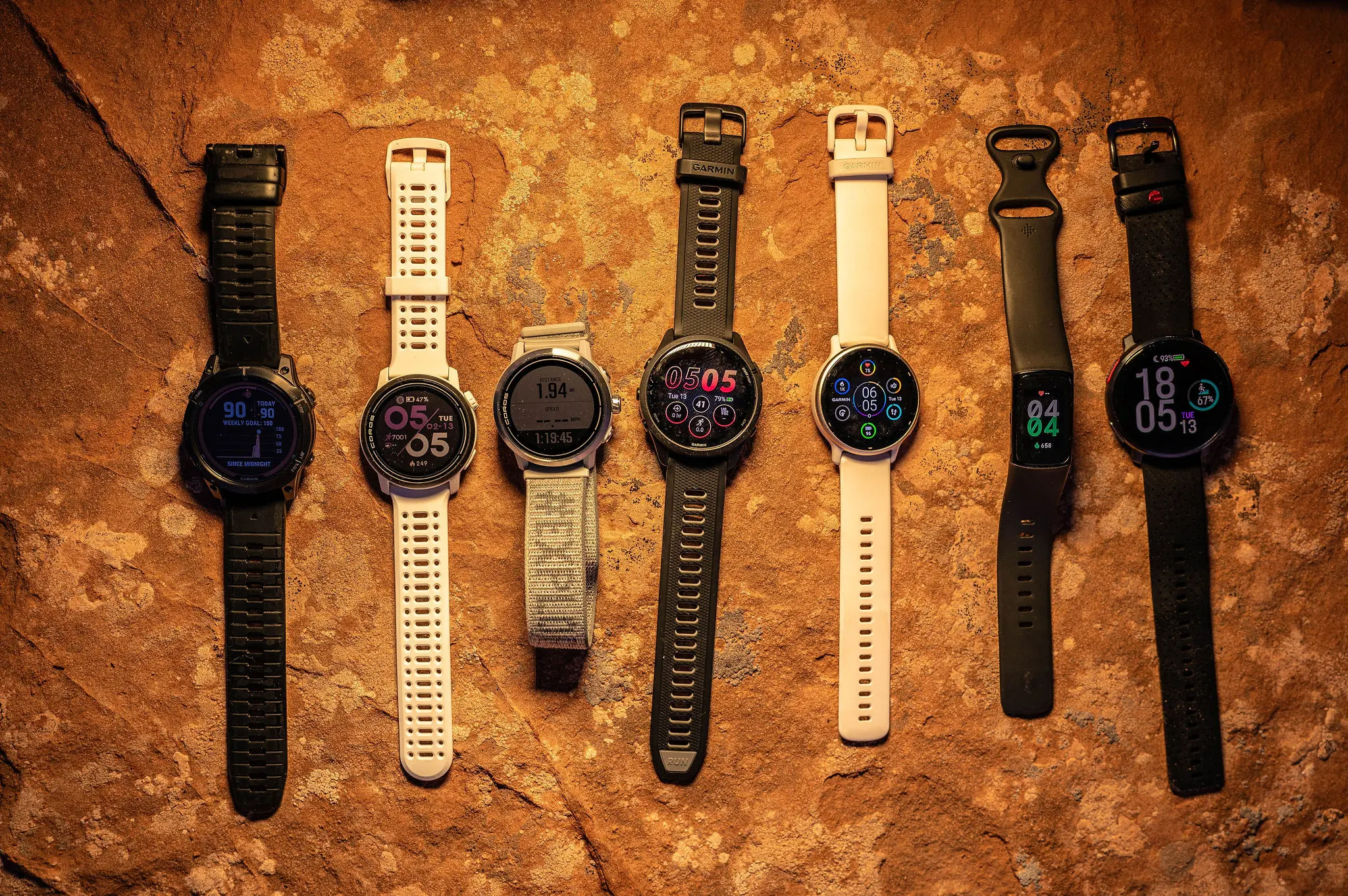

The Best Fitness Watches of 2026
We tested the best fitness watches of 2025 with options for every budget. Our top picks include Garmin, COROS, and more!
